The Garment District | Interview | Jennifer Baron
Drawing from a seemingly endless palette of sound and expansive soundscapes, Jennifer Baron has managed to create a unique musical world of her own, unaffected, tainted or influenced by anything going on around her.
Yes, there are elements of things that you might’ve heard before, shimmering guitar flutters in the background, shadow boxing moves from the late 60s and early 70s San Francisco scene, Baron’s crooning, cooing chanteuse-esque voice hanging amidst the mellow melodies like Faye dancing in the early morning mist of a warm summer morning. The electronic soundscapes that are spread throughout The Garment District’s catalog really set Baron apart and say something interesting and unique about her music, though. While there are songs like “Secondhand Sunburn” that are obviously constructed and built from the ground up with a good deal of forethought and contemplation, the electric soundscapes on Melody Elder and If You Take Your Magic Slow are off the cuff forays into musical exploration and experimentation, drawing in instruments, sounds and ideas that seem almost counterintuitive to the rest of the album, but somehow serve to underscore the power and sheer emotional spectrum that The Garment District’s music is capable of traversing. The world is literally a song to Baron, the sounds and people in its instruments, her music culling from a meticulously cultivated library of field recordings done by Baron herself. When you listen to a Garment District album you’re stepping into a different world, a world of unpredictable sounds, emotional heartfelt reunions and devastating separations. This is experimental music in all the right ways, a sense of joy and exploration dripping from every note, chord and cry, solo and chant. Come on a journey with me through The Garment District, keep an open mind bearing in mind that things are going to get a little trippy and psychedelic at times, and I guarantee you things will never be quite the same again… Things will be a little bit broader, and maybe a little bit better.
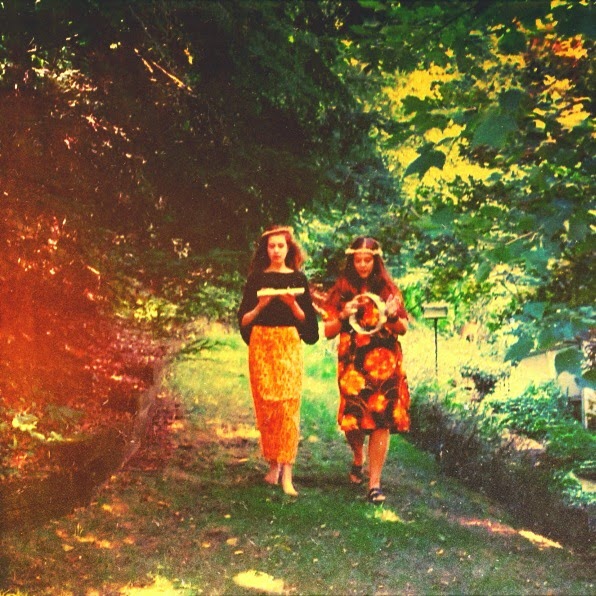
Now I know that The Garment District is mostly just yourself making music on your own, but that it also features appearances from some family and friends and I know you play out as well. Is there a set group or a usual go-to group of people that you usually turn to?
Jennifer Baron: Yes, The Garment District is me, along with some contributions from family and friends, which can take various configurations for recording and performing. I have a core group of musicians who perform with me, something of a slightly rotating band of merry pranksters. The translation of my composed and recorded music to the live experience has been on my mind lately, since my goal is to perform more often. I’ve put together something of a collective of musical characters, some who even live in other cities. This group includes my husband Greg Langel on keyboards, guitar players Dan Koshute from Dazzletine or Daniel Miller, bassists Corry Drake or Matt Booth, and various drummers, or a combination of drum machine, sampler and live drums. For our record release show in August, I was thrilled to perform with several musicians who play on my new album, including Matt Booth on bass and Chris Parker on drums, and I very much hope to play more shows with them. Keeping the family jams vibe is my cousin Lucy on lead vocals, my cousin Sam on percussion, and my husband on synth. We recently performed as a three-piece for an event called SYNC’D. I was invited to compose soundtracks for five film shorts made by Pittsburgh artists, and then perform them live in this magnificent 1900’s-era former Czech church right on the Allegheny River. It was one of my favorite live musical experiences yet, so I keep my mind open to new ways of sharing The Garment District as a live entity. Even with the different incarnations of the live band, there’s a constant core to my music and songwriting. For our next show on October 11th, I’m very excited that our lineup will include Shivika Asthana, from the band Papas Fritas, playing drums and singing backing vocals, and Ashlee Green, of Butterbirds, who will be singing lead vocals.
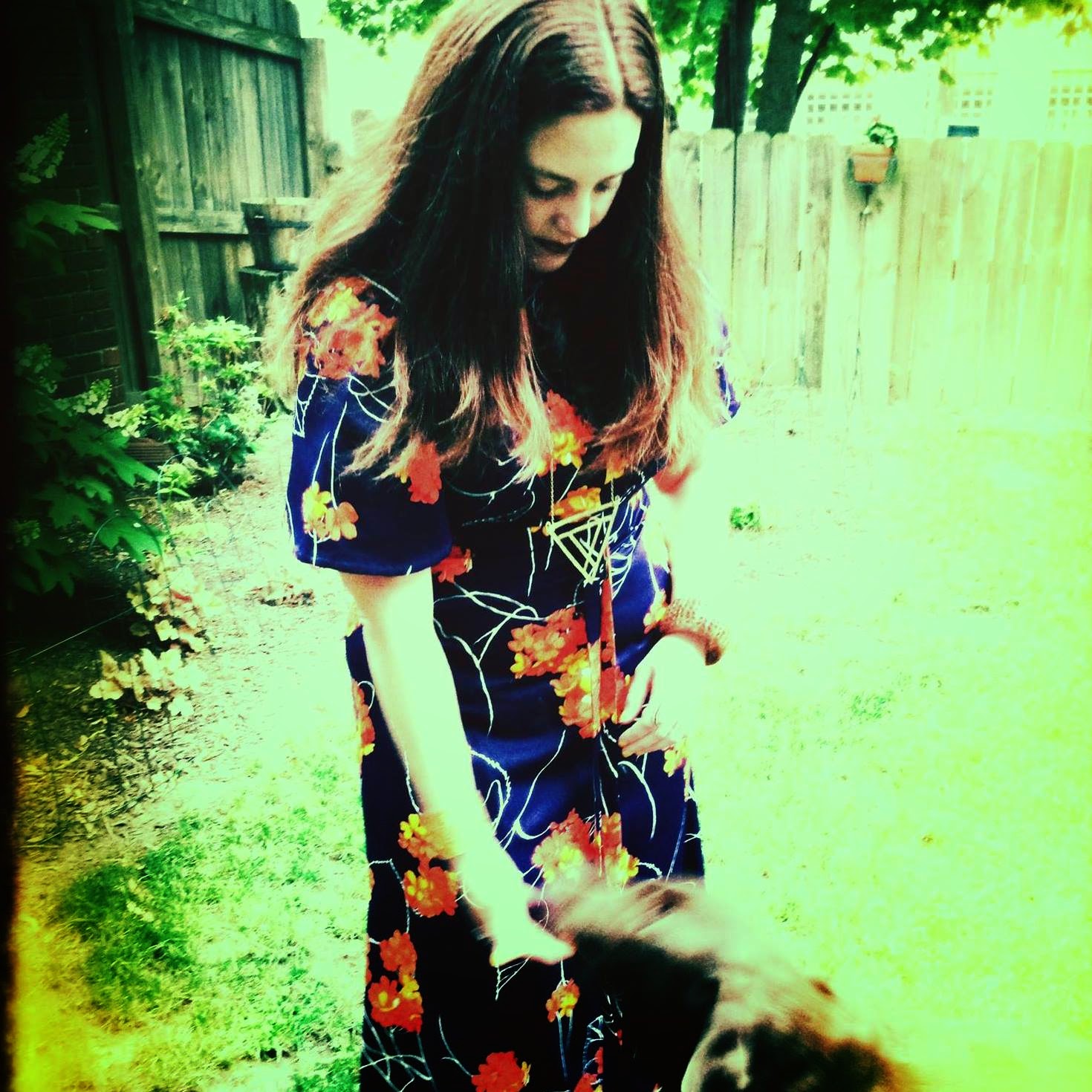
Are you involved in any other bands or do you have any other projects going besides The Garment District? Have you ever released music in the past with anyone else? If so, can you tell us a little bit about that?
Carving out more time to write, record and perform as The Garment District, is my central desire and priority musically. I hope to work on a potential new project with Shivika Asthana, who played drums and sang in the band Papas Fritas. We both share a desire to make music with other female musicians. Shiv[ika] recently moved to Pittsburgh, where I live now, and we were reunited after not seeing each other since our former bands played together in the late 1990’s. My experience in other bands goes back to the ten years I lived in New York City. While there, I first played guitar and sang backing vocals in Saturnine, and then was a founding and longtime member of The Ladybug Transistor, so that decade was filled with wonderful experiences performing, recording and touring. We played regularly at New York City venues such as Brownies, The Knitting Factory, Mercury Lounge, Bowery Ballroom and Under Acme, so that’s really where I learned to be part of a band. I lived in a spacious old Victorian house in Flatbush, Brooklyn with The Ladybug Transistor, totally Partridge Family, Fleetwood Mac-style. It was a highly productive time for us musically, making such albums as The Albemarle Sound for Merge in 1999 and Argyle Heir for Merge in 2000. I loved living within what was one of the most diverse zip codes in the US. Our studio, Marlborough Farms, was located in a basement and the nearby Prospect Park and Coney Island, as well as state park beaches, provided very inspiring locales for our musical mindset. Many other bands record there, such as Crystal Stilts and Hamish Kilgour, with engineer and musician Gary Olson, who started The Ladybug Transistor. That time was very influential, living communally in a house with a yard, porch, spacious rooms, grape arbor and a tree-lined street, all in the middle of a city housing some eleven million people. Our friends’ bands were always passing through, sleeping on our floors and playing shows with us, including Of Montreal, The Lucksmiths, Neutral Milk Hotel, The Aislers Set etcetera. With The Ladybug Transistor, we released numerous albums on Merge, as well as singles and compilations and toured extensively in the US, Europe, Canada, and Scandinavia. We also had the life-altering experience of collaborating on a cover of ‘Puis-Je?’ with one of our musical heroes, the late legendary Soft Machine co-founder Kevin Ayers. We contributed a cover of ‘I Found A Reason’ to The Velvet Underground tribute CD, Rabid Chords, and performed at international festivals, including The Bowlie Weekender, the first All Tomorrow’s Parties in Camber Sands, England, which was curated by Belle & Sebastian. In Pittsburgh, I’ve also performed and recorded music as part of the band The New Alcindors.
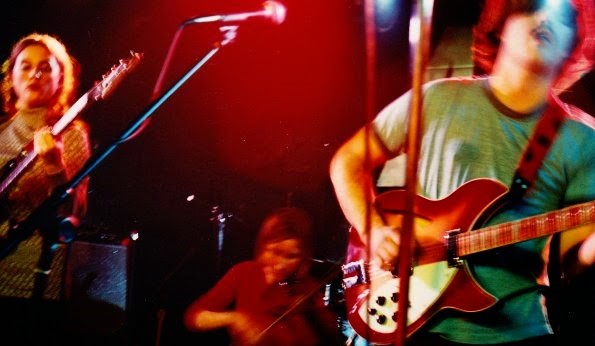
How old are you and where are you originally from?
I was born in Neptune, New Jersey, right near Asbury Park, and we lived in a few small beach towns. My dad worked for Sears, and that took us from New Jersey across Pennsylvania, to State College and Altoona, and then eventually to Pittsburgh, where I grew up. I think that because I was born in a beach town, I’ve since spent the rest of my life trying to get back to that ocean environment where I feel most at one with the world.
What was the local music scene like where you grew up? Did you see a lot of shows where you grew up? Do you feel like you were very influenced by that scene? Do you feel like it played a large role in shaping your musical interests or shaping your tastes?
I grew up going to a ton of shows, both with my parents, who had a fantastic vinyl collection and a shared love of music, and with friends. I was fortunate to live about six miles from Downtown Pittsburgh, and we often rode the T (light railtransit) to shop at early locations of an iconic local record store called Eide’s. Making the teenage pilgrimage with friends, and meeting kids from other areas of the city and older music figures, profoundly inspired my interest in making music. The pre-digital world of gathering in public spaces and having no prior “image” or perception of what or who you might encounter or discover that day, whether at a live show, at a record, video or book store, or on tour with your band, is something that I am so incredibly happy was a part of my youth. My first concert, although my mom says I “saw” others in utero, was Peter, Paul & Mary at The Stanley Theatre, which is now the Benedum Center for Performing Arts, in Downtown Pittsburgh with my mom, when I was in elementary school my mom used to sing “Stewball” to my three brothers and me when we were children, and she named her dog, an Italian Spinone who also happens to be very equestrian, after the song. My first concert alone, with friends getting dropped off by parents, was The Kinks at the now demolished Civic Arena (RIP) in Pittsburgh, when I was in junior high. I was hooked. There were a ton of fantastic shows in the late 1980’s in Pittsburgh, and many cool, now defunct, alternative all-ages venues. We went to all-ages Sunday punk nights at the legendary club, The Electric Banana, to shows at the Masonic Temple where my brother’s high school band opened for Nirvana in 1990, Shady Skates and also the Syria Mosque Ballroom, which was a space downstairs in the gorgeous, and tragically razed, Syria Mosque. The Syria Mosque was a very important venue for my early musical explorations, and occupies a very special place in my psyche. A three thousand seven hundred-seat venue located in Oakland, it was built in 1911 as a mystical shrine for the Ancient Arabic Order of the Nobles of the Mystic Shrine and designed by Huehl, Schmidt & Holmes. It’s one of the great losses of Pittsburgh’s landmark early 20th-century architecture. This is where, as a kid, I saw New Order, The Cure, REM, The Three O’Clock, Camper Van Beethoven, The Ramones, Hüsker Dü and Modern English, just to name a few! Seeing The Smiths’ The Queen is Dead tour at the Fulton Theater, now the Byham, was also a highlight of my youth. My brother Jeff always played guitar in bands in junior high and high school, so he was certainly an early inspiration in terms of the concept of starting and playing in a band as well. I guess it just took a bit longer for it to dawn on me that I could do it too. I hope to start volunteering at the new Girls Rock Camp which launched recently here in Pittsburgh, as it’s an amazing support system that did not exist when I was growing up.
How old are you and where are you originally from?
I was born in Neptune, New Jersey, right near Asbury Park, and we lived in a few small beach towns. My dad worked for Sears, and that took us from New Jersey across Pennsylvania, to State College and Altoona, and then eventually to Pittsburgh, where I grew up. I think that because I was born in a beach town, I’ve since spent the rest of my life trying to get back to that ocean environment where I feel most at one with the world.
What was the local music scene like where you grew up? Did you see a lot of shows where you grew up? Do you feel like you were very influenced by that scene? Do you feel like it played a large role in shaping your musical interests or shaping your tastes?
I grew up going to a ton of shows, both with my parents, who had a fantastic vinyl collection and a shared love of music, and with friends. I was fortunate to live about six miles from Downtown Pittsburgh, and we often rode the T (light rail transit) to shop at early locations of an iconic local record store called Eide’s. Making the teenage pilgrimage with friends, and meeting kids from other areas of the city and older music figures, profoundly inspired my interest in making music. The pre-digital world of gathering in public spaces and having no prior “image” or perception of what or who you might encounter or discover that day, whether at a live show, at a record, video or book store, or on tour with your band, is something that I am so incredibly happy was a part of my youth. My first concert, although my mom says I “saw” others in utero, was Peter, Paul & Mary at The Stanley Theatre, which is now the Benedum Center for Performing Arts, in Downtown Pittsburgh with my mom, when I was in elementary school My mom used to sing “Stewball” to my three brothers and me when we were children, and she named her dog, an Italian Spinone who also happens to be very equestrian, after the song. My first concert alone, with friends getting dropped off by parents, was The Kinks at the now demolished Civic Arena (RIP) in Pittsburgh, when I was in junior high. I was hooked. There were a ton of fantastic shows in the late 1980’s in Pittsburgh, and many cool, now defunct, alternative all-ages venues. We went to all-ages Sunday punk nights at the legendary club, The Electric Banana, to shows at the Masonic Temple where my brother’s high school band opened for Nirvana in 1990, Shady Skates and also the Syria Mosque Ballroom, which was a space downstairs in the gorgeous, and tragically razed, Syria Mosque. The Syria Mosque was a very important venue for my early musical explorations, and occupies a very special place in my psyche. A three thousand seven hundred-seat venue located in Oakland, it was built in 1911 as a mystical shrine for the Ancient Arabic Order of the Nobles of the Mystic Shrine and designed by Huehl, Schmidt & Holmes. It’s one of the great losses of Pittsburgh’s landmark early 20th-century architecture. This is where, as a kid, I saw New Order, The Cure, REM, The Three O’Clock, Camper Van Beethoven, The Ramones, Hüsker Dü and Modern English, just to name a few! Seeing The Smiths’ The Queen is Dead tour at the Fulton Theater, now the Byham, was also a highlight of my youth. My brother Jeff always played guitar in bands in junior high and high school, so he was certainly an early inspiration in terms of the concept of starting and playing in a band as well. I guess it just took a bit longer for it to dawn on me that I could do it too. I hope to start volunteering at the new Girls Rock Camp which launched recently here in Pittsburgh, as it’s an amazing support system that did not exist when I was growing up.
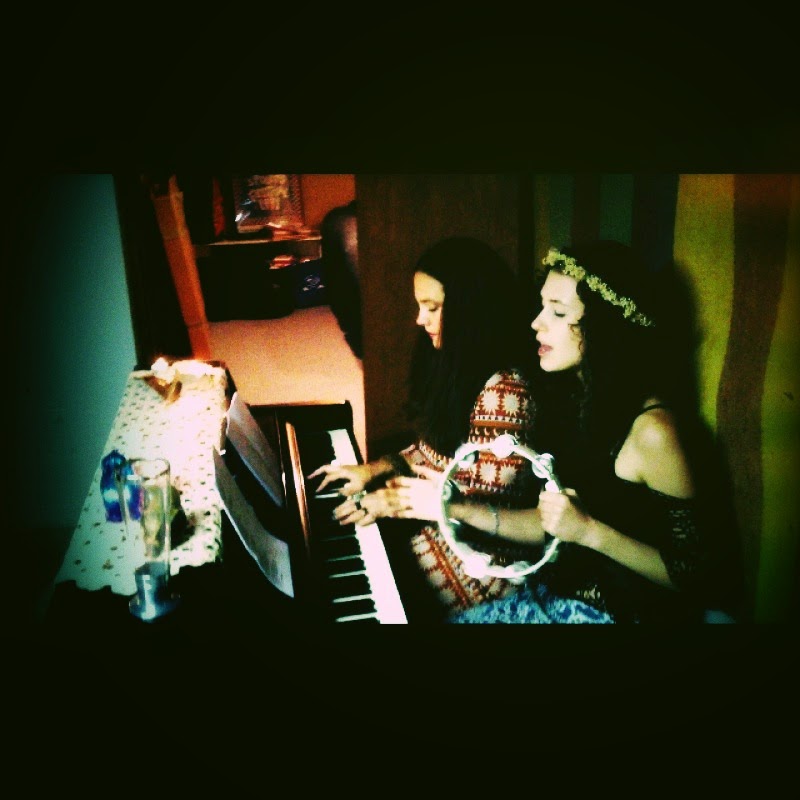
What about your home when you were growing up? Was there a lot of music around the house? Were either of your parents or any of your close relatives musicians or just extremely interested/involved in music? What do you consider to be your first real exposure to music?
Growing up, our house was filled with LPs, cassettes and CDs. Vinyl records were literally some of our first toys, so I was fortunate enough to feel like I had a private listening library or record store to share with my brother Jeff. Among the first albums we bought were compilations of “hits” from the 1950’s to the 1970’s. Ones in heavy rotation included Napoleon XIV’s “They’re Coming to Take Me Away” (1966), The Coasters’ ‘Yakety Yak’ (1958) and Sam The Sham & The Pharaohs “Li’l Red Riding Hood” (1966). Those songs all have catchy melodies paired with evocative imagery and narratives to stir a child’s curiosity and imagination. They got lodged in my brain and I still love them, and instantly associate them with childhood. Our cars always had tape decks and 8-track players for our many road trips to Philadelphia to see our grandparents and to the beach. Some of my first pre-verbal memories are of staring at fantastical and visually rich album covers, such as The Beach Boys’ Pet Sounds, all of the Beatles records’, the Jimi Hendrix Experience’s Axis: Bold As Love, Cream’s Disraeli Gears, Jefferson Airline’s Surrealistic Pillow, Donovan’s A Gift from a Flower to a Garden, Van Morrison’s Astral Weeks, and many others. The titles and artwork were all as engrossing as the music. My mom was a high school English teacher when we were kids. One course she taught was called “Poetry and Rock Lyrics” and I loved to help her write out song lyrics on index cards that she used in lessons and to decorate her classroom walls. We did not grow up with religion, so I always joke that Leonard Cohen—Bob Dylan—Neil Young was the holy trinity in our house. My parents have lyrics to Dylan’s “Sad-Eyed Lady of the Lowlands” from Blonde on Blonde written out in calligraphy and framed hanging on their wall, so the music of the 1960’s and 1970’s is in my DNA. We also had tons of children’s music on LP, and a Fisher Price turntable with thick plastic “records” that had grooves. I remember these small red and yellow children’s 45s with songs such as “The Muffin Man”, which definitely must have fueled my interest in offbeat folk music and melodies. We listened incessantly to Free To Be … You And Me and songs like “Puff, the Magic Dragon,” which are touchstones. My brother and I would act out our own radio shows, playing both the parts of DJs and performing made-up commercial spots, and recording them onto Maxell tapes. We spent countless hours pouring through my parents’ old copies of Mad Magazine and Rolling Stone and staring endlessly at album artwork while listening to music, which is so much more of a direct and less mediated way to hear music than the way most people experience sound today. When I was little, I read a ton, both to myself and with my mom. One of the most powerful children’s books that has stuck with me as an adult is Arm in Arm by Remy Charlip, who I named one of my new songs after. Remy was an American artist, writer, choreographer, theatre director, designer, and educator who wrote and illustrated children’s books, performed with John Cage, and was a founding member of the Merce Cunningham Dance Company. He also designed sets and costumes, and developed a type of dance choreography that integrated his drawings. His book was a source of great imaginative experiences, similar to other books I was obsessed with like The Phantom Tollbooth. Arm in Arm is filled with visual and kinetic and freeform poetry and clever word-play, concrete poetry that forms shapes and pictures. I think that’s one of the early influences which have helped to shape my sense of pattern, rhythm, phrasing and texture in music. It was so uncanny, because soon after I decided to name that song for him, he passed away. Growing up we also had a bunch of mind-blowing concert posters by legendary Fillmore West artist Bonnie MacLean hanging in our house, along with others, including postcards, by her. One in particular, for a Pink Floyd show, I found to be hypnotic. As a kid, I think I associated the male figure with my dad because he had the same thick curly hair as the figure on the poster. My mom used to tell me stories about rooming for a year at Penn State University with Bonnie’s younger sister Valerie; they also went to high school together in Bucks County, Pennsylvania. Posters like this would arrive in packages and were all over their dorm. A Philadelphia native, Bonnie moved to San Francisco in 1964, joining the Fillmore staff and later marrying, and having a son with Bill Graham, to collect tickets, pass out handbills, and count receipts, and eventually taking over the production of promotional artwork. While Wes Wilson’s and Lee Conklin’s names are ubiquitous with the ’60s Fillmore scene, I think Bonnie’s vision remains brilliant and distinct; seeing her posters in my home as a child definitely helped to shape my psyche. Next step is to finally help my mom restore and reframe it! My dad also created drawings and paintings that were around our house and my mom sewed our curtains and clothing, some of this was the inspiration for my song ‘Secondhand Sunburn,’ and I even have some of her curtains and table runners in my house today and saved some of her amazing brightly hued and patterned vintage fabrics. As a family, we’ve attended many concerts together, Leonard Cohen, Neil Young, Bob Dylan, Bert Jansch. It’s a special kind of bond to share with your parents. My step-dad and his friend even snuck me into a 21+ club when I was in high school to see The Replacements. My first music lessons were on piano in elementary school, but that was rudimentary and I didn‘t feel a personal connection to the teacher, though I did retain some important basic knowledge. The best part of those lessons was learning Native American songs which I loved to play. I took a bit of guitar lessons in high school and college but am primarily a self-taught musician. At holidays, I get together with my brother Jeff, who contributes some guitar on my new album, his girlfriend, my husband, and my cousins for family jams, with all of us playing different instruments. My parents don’t play any instruments, but my mom, dad and step-dad are huge lifelong music fans. Music is also in our family’s heritage; my grandfather and his siblings played in a Croatian Tamburitza band, called an orchestra, led by my great-grandfather John Baron, who came to the US from Zagreb, when they were growing up in Braddock, Pennsylvania. By age twelve, the three Baron kids were proficient on traditional tamburitza instruments such as the prim, tambura and bas-prim, and were put to work playing at weddings, apartments or wherever my great-grandfather could hire them out; places where shots of whiskey flowed during breaks. Here is a photo from my family’s archives with an accompanying story I wrote about their group which is featured on an online photography initiative called Now See This: A People’s History of Pittsburgh.
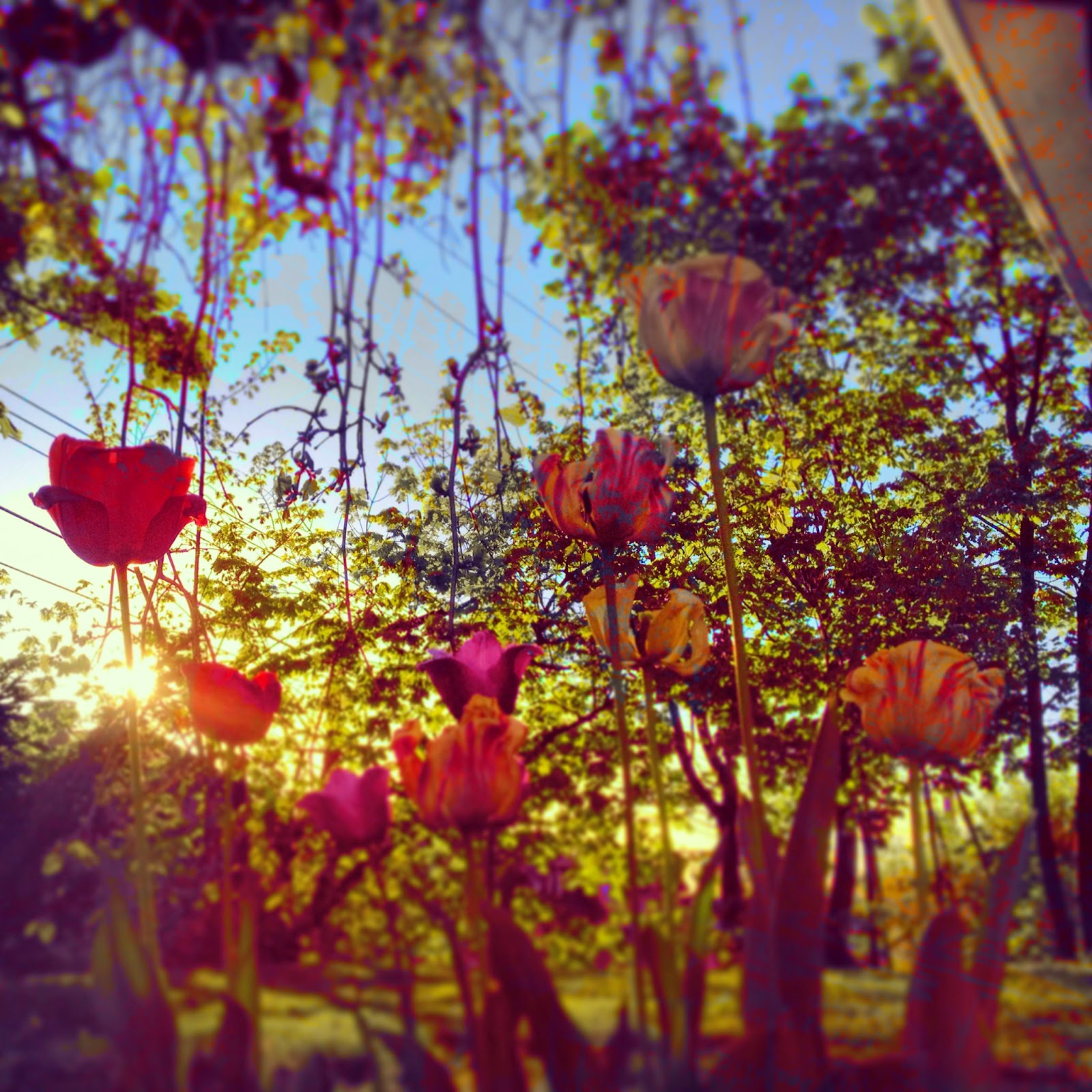
If you were to pick a moment, a single moment that seemed to change everything for you and opened your eyes to the infinite possibilities that music presents, what would it be?
For me, they are more like tiny moments spread out across my memory that come in and out of view. Some of the earliest moments were pre-verbal, listening to my parents’ albums and having my mom sing songs to us like Free To Be … You and Me and “Puff, the Magic Dragon,” enjoying the music in Schoolhouse Rock, as well as in Saturday cartoons and TV shows such as H.R. Pufnstuf, Sesame Street, Bugs Bunny and Scooby Doo. At the time, all of that music was imaginative, visceral and pulled me into new worlds, and today, I continue to be in awe of its complexity, texture, sense of melody and lush arrangements.
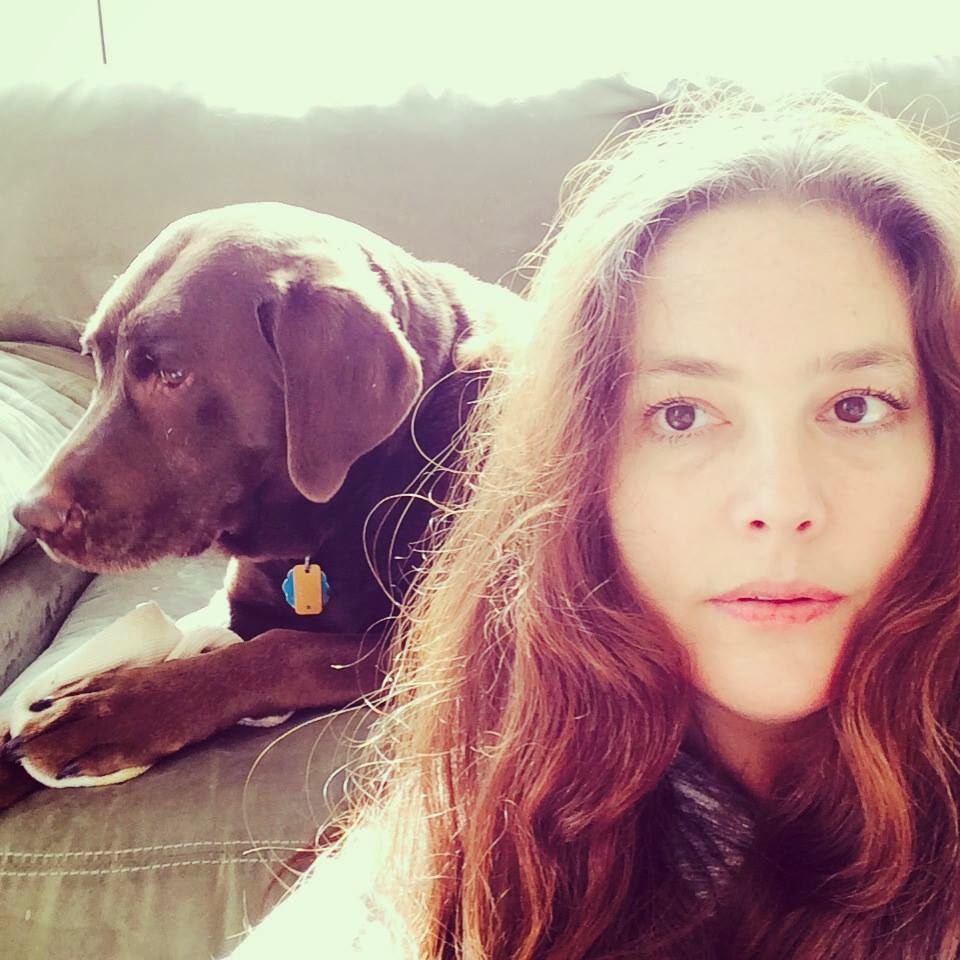
When did you decide that you wanted to start writing and performing your own music? What brought that decision about for you?
I think as far as desire, it was always there, maybe from the first time I heard music on the turntable and radio. My grandparents always had an AM radio on in the kitchen of their ranch house, and I found that to be very comforting, kind of like the sounds of crickets or ocean waves. As soon as I moved to New York City, I started playing in a band called Saturnine, quite naturally through meeting new friends, and it began a very spontaneous organic time in my life playing music. As a member of The Ladybug Transistor, I was one of four songwriters in the band, and first joined as a bassist. I leaned a great deal about writing, performing and recording music while I was in The Ladybug Transistor, particularly since we had a recording studio in our house. We all lived together for a period of time and I got to assist with recording and mixing our albums, making music was intrinsically integrated into our communal lifestyle. I also feel that because listening intensely to music has always been a constant in my life, it has inspired my desire to make music the kind of music I do as The Garment District as well.
What was your first instrument? When and how did you get that?
A black Fender acoustic guitar from Lawrence Music in Castle Shannon, Pennsylvania. It was a gift from my parents when I left for college, and I hope to have it forever. My parents have always been supportive of our music making. For Christmas one year, they gave me my beloved red sunburst (fireglo) Rickenbacker 360, which I love to play. My first electric guitar was a seafoam green Fender American Standard Stratocaster, which was tragically stolen during a show at Brownie’s in New York City (RIP).
When and how did The Garment District form? Was it a conscious decision where you set out to work on your own stuff with a certain goal in mind, or did it just kind of consciously evolve from a sort of exploration, or some such? When would that have been?
After I moved back to Pittsburgh, I played organ for a while in The New Alcindors, an instrumental combo inspired by 1960s soul and garage music with whom I had the privilege of using a Fender guitar amp that once belonged to Clarence White of The Byrds, while recording at Nashville’s legendary Castle Studios! During that time in the mid-2000s, I became very involved with running Handmade Arcade, Pittsburgh’s first and largest independent craft fair, and also operating my own craft lines The Polka-Dot Life and Fresh Popcorn Productions. I travelled to other cities such as New York City and Chicago, to participate in large national indie craft fairs such as the Renegade Craft Fair and the BUST Magazine Craftacular. I was also starting to do a lot more photography and was able to channel my love of vintage signs and roadside culture into a book, as co-editor of, and a contributor to Pittsburgh Signs Project: 250 Signs of Western Pennsylvania (Carnegie Mellon University Press, 2010), a grant-funded project I worked on with three other Pittsburgh artists, including my husband, Greg. This was a period when things were germinating for me music-wise; I started writing a lot of new music that led to Melody Elder, my first Garment District release, which came out as a cassette on Night-People Records in 2011. It was a natural extension for me to go from the indie music scene to the indie craft scene, and vice versa. In The Ladybug Transistor, we were always designing and making our own t-shirts, buttons and some stage paintings, and of course peddling all of this while on tour.
Can you talk a little it about what The Garment District means as a name or title for the music? How did you come up with it and go about choosing it? Where there any close seconds that you almost went with you can recall?
I came up with the name to reflect my love for vintage textiles and fashion, sewing and crafting, as well as my deep respect for the women, countless anonymous laborers who toiled in dangerous conditions in specific parts of cities around the world; and still do. I’m a crafter, so the name also reflects my other artistic outlets. I’m drawn to the way certain words sound and look, both when spoken/heard and when written as typeface. For me, The Garment District implies a sense of making, creative labor, production and innovation, as well as a distinct sense of place, which I hope is reflected in my music, songwriting and videos also. I like the idea of taking an overarching concept or signifier of a place/space/event that has certain connotations, and that involved an unfathomable amount of human labor and energy on a mass commercial scale, and co-opting it for a project that is very homespun, tactile and visceral, especially given that I release music on limited-edition cassettes and on hand-designed vinyl. On a more literal level, when I lived in New York City, I was obsessed with shopping for vintage trimmings on lower Canal Street, in Chinatown and in Brooklyn warehouses.
When did you decide that you wanted to start writing and performing your own music? What brought that decision about for you?
I think as far as desire goes, it was always there, maybe from the first time I heard music on the turntable and radio. My grandparents always had an AM radio on in the kitchen of their ranch house, and I found that to be very comforting, kind of like the sounds of crickets or ocean waves. As soon as I moved to New York City, I started playing in a band called Saturnine, quite naturally through meeting new friends, and it began a very spontaneous organic time in my life playing music. As a member of The Ladybug Transistor, I was one of four songwriters in the band, and first joined as a bassist. I learned a great deal about writing, performing and recording music while I was in The Ladybug Transistor, particularly since we had a recording studio in our house. We all lived together for a period of time and I got to assist with recording and mixing our albums, making music that was intrinsically integrated into our communal lifestyle. I also feel that because listening intensely to music has always been a constant in my life, it has inspired my desire to make music the kind of music I do as The Garment District as well.
What was your first instrument? When and how did you get that?
A black Fender acoustic guitar from Lawrence Music in Castle Shannon, Pennsylvania. It was a gift from my parents when I left for college, and I hope to have it forever. My parents have always been supportive of our music making. For Christmas one year, they gave me my beloved red sunburst (fireglo) Rickenbacker 360, which I love to play. My first electric guitar was a seafoam green Fender American Standard Stratocaster, which was tragically stolen during a show at Brownie’s in New York City (RIP).
When and how did The Garment District form? Was it a conscious decision where you set out to work on your own stuff with a certain goal in mind, or did it just kind of consciously evolve from a sort of exploration, or some such? When would that have been?
After I moved back to Pittsburgh, I played organ for a while in The New Alcindors, an instrumental combo inspired by 1960s soul and garage music with whom I had the privilege of using a Fender guitar amp that once belonged to Clarence White of The Byrds, while recording at Nashville’s legendary Castle Studios! During that time in the mid-2000s, I became very involved with running Handmade Arcade, Pittsburgh’s first and largest independent craft fair, and also operating my own craft lines The Polka-Dot Life and Fresh Popcorn Productions. I travelled to other cities such as New York City and Chicago, to participate in large national indie craft fairs such as the Renegade Craft Fair and the BUST Magazine Craftacular. I was also starting to do a lot more photography and was able to channel my love of vintage signs and roadside culture into a book, as co-editor of, and a contributor to Pittsburgh Signs Project: 250 Signs of Western Pennsylvania (Carnegie Mellon University Press, 2010), a grant-funded project I worked on with three other Pittsburgh artists, including my husband, Greg. This was a period when things were germinating for me music-wise; I started writing a lot of new music that led to Melody Elder, my first Garment District release, which came out as a cassette on Night-People Records in 2011. It was a natural extension for me to go from the indie music scene to the indie craft scene, and vice versa. In The Ladybug Transistor, we were always designing and making our own t-shirts, buttons and some stage paintings, and of course peddling all of this while on tour.
Can you talk a little about what The Garment District means as a name or title for the music? How did you come up with it and go about choosing it? Were there any close seconds that you almost went with you can recall?
I came up with the name to reflect my love for vintage textiles and fashion, sewing and crafting, as well as my deep respect for the women, countless anonymous laborers who toiled in dangerous conditions in specific parts of cities around the world; and still do. I’m a crafter, so the name also reflects my other artistic outlets. I’m drawn to the way certain words sound and look, both when spoken/heard and when written as typeface. For me, The Garment District implies a sense of making, creative labor, production and innovation, as well as a distinct sense of place, which I hope is reflected in my music, songwriting and videos also. I like the idea of taking an overarching concept or signifier of a place/space/event that has certain connotations, and that involved an unfathomable amount of human labor and energy on a mass commercial scale, and co-opting it for a project that is very homespun, tactile and visceral, especially given that I release music on limited-edition cassettes and on hand-designed vinyl. On a more literal level, when I lived in New York City, I was obsessed with shopping for vintage trimmings on lower Canal Street, in Chinatown and in Brooklyn warehouses.
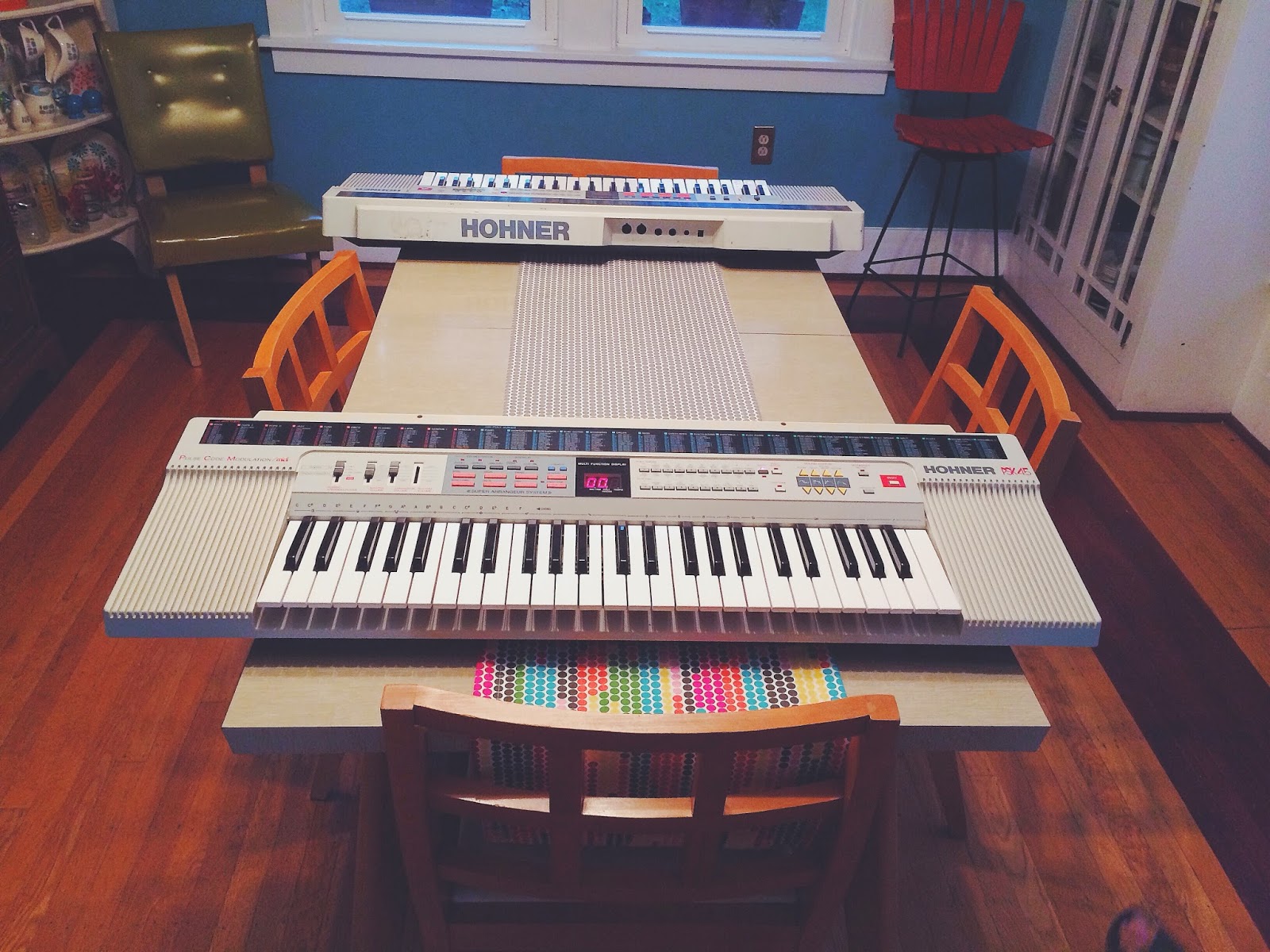
Where’s the band located these days?
Pittsburgh, Pennsylvania, sometimes called the Paris of Appalachia.
How would you describe the local music scene where you’re at now? Do you feel very involved in the local scene? Do you book or attend a lot of local shows or anything?
I’m involved, sure, but I don’t tend to think about things I do in terms of a scene too much anymore. I go to a fair amount of shows, perhaps not at many as I wish I had the time and energy to attend. I don’t book shows per se, but I try to be supportive and helpful when I can, since I do receive lots of inquiries from bands from all over the world looking to play together or to set up shows in Pittsburgh. Musically, I have collaborated with other Pittsburgh musicians, such as Buscrates 16-Bit Ensemble, who did a remix of my song, “Bird Or Bat,” and who is also a member of East Liberty Quarters, and has performed with me live. I’ve also performed at the Pittsburgh-based VIA Music & New Media Festival and SYNC’d Film & Music event, and will be performing in October at the new HughShows Live @ Eide’s Series. This is sometimes a complicated question to answer that can generate conflicted or contradictory thoughts; it’s better over drinks! At times I feel that Pittsburgh is a very transient and fragmented city and that can be frustrating. By nature, I’m often in a state of wanderlust, and I think that also inspires me to make music. I tend to look at a place as a whole, and not just in terms of a music scene. A sense of place, and a relationship to surroundings, has always weighed heavily on my mind no matter where I live. My first true love affair with a city came when I lived in New York City. I am someone who feels that people can have many “homes”. I’m very drawn to, and inspired by, Pittsburgh’s amazing topography, art scene, architecture (buildings by Frank Lloyd Wright, H.H. Richardson, Mies van der Rohe, Frederick G. Scheibler, Frederick Osterling, Paul Schweikher), authentic neighborhoods, thrift shops, and record stores. There’s a spirit or feeling that you can truly start or try something here and have a hand in its creative evolution. One of my favorite things about Pittsburgh is its remarkable role in America’s music history, in terms of jazz, soul and funk (Kenny Clarke, Art Blakey, Beaver Harris, Dodo Marmarosa, Billy Strayhorn, Gene Ludwig, Betty Davis, Henry Mancini), rock and roll (Fantastic Dee-Jays, Swamp Rats, The Duchess, Todd Tamanend Clark, The Cynics) and 1950s/1960s pioneering DJs, teen dance clubs and pop hits. This is where taste-making DJs such as Terry Lee, Mad Mike and Porky Chedwick (RIP all three of them!) created hits for many obscure groups and where songs like Tommy James’s “Hanky Panky” were literally revived and made into hits here; so music is in the fabric. Adding to this legacy and creating a progressive space for the future of music in Pittsburgh, is a fairly active underground music and grassroots arts scene, with independent tape and vinyl labels, house shows, recording studios, art galleries, and incredible museums. An annual new media and music festival called VIA is also a welcome addition. They hosted the world premiere of RVNG Intl’s FREAKWYS Ensemble (James Ferraro, Laurel Halo, Daniel Lopatin, David Borden, Samuel Godin), and have also hosted other pioneering and contemporary music figures such as Richard Pinhas (Heldon) and Robert Beatty. Being invited to perform at the 2012 VIA Music & New Media Festival opening for Julia Holter, was a huge honor that came at a pivotal time for me when starting The Garment District. People are always surprised to find out that Pittsburgh is home to amazing sprawling parks, dramatic funiculars, tunnels and vistas that are actually quite European, and you can get lost in the wilderness in state parks one hour from the city. The mix of grittiness and green here fuels my own creativity. There’s a fascinating intersection of labor, innovation, art and creativity unique to Pittsburgh. We’re also surrounded by hills and valleys that can provide inspiring views, but can also feel claustrophobic and landlocked, especially during the winter.
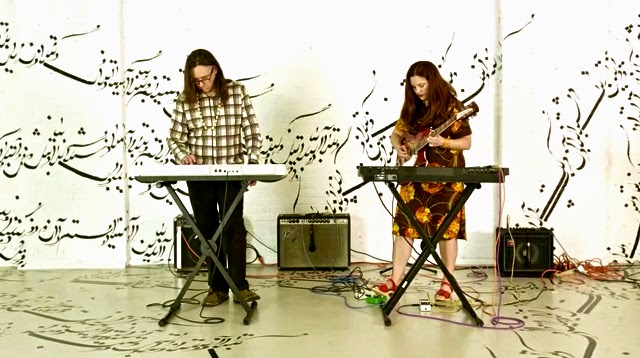
Are you involved in recording or releasing music at all? If so, can you tell us about us briefly?
Yes! In the past, I’ve recorded and released numerous 45s, LPs, CDs and compilations as a member of the bands The Ladybug Transistor and Saturnine, and have also recorded with The New Alcindors. In late 2011, I released my debut as The Garment District, a cassette called Melody Elder on Night-People Records. This came about in a serendipitous way, during a pivotal time when I was starting to make new music again. One night in 2010, I attended a show in Pittsburgh, and Wet Hair Shawn Reed who runs Night-People’s band was on the bill. The funny thing is that I can’t remember which band I went to see that night. I love that rare experience when you go to a show and discover a new band you love that you have never heard before, which is exactly what happened. I spent time looking at the Night-People releases, which is always a great ritual during a show like that. I loved seeing Shawn’s silkscreened tapes in physical form and I was impressed with his selection of beautiful limited-edition handmade cassettes and 45s and his authentic approach to running the label. I had already started working on parts of Melody Elder, and had a few nearly finished songs, along with some demos and some compositions in progress. Shawn was one of the few people I shared that new music with at the time. I was listening to a bunch of other releases on Night-People and very much respect and admire the aesthetic and community he supports and has created via Night-People, and Shawn’s attention to and respect for the handmade process. I sent some of my new music to Shawn, and he wrote back to me one night at like 1:30 a.m. asking if I wanted to do a tape which came out in late 2011. In late 2012, I released a three-song 7” featuring a remix by Sonic Boom on the French label, La Station Radar and in July 2014, my full-length album, If You Take Your Magic Slow, was released on vinyl and digitally, on Night-People. I’ll talk more about recording in the answers to follow.
Has the local scene played a large or important role in shaping the sound of, or in the history or evolution of The Garment District? Or do you feel like you could be doing what you’re doing regardless of where you were at or what you were surrounded by?
It’s impossible for humans to not be impacted by their surroundings, but in my heart I feel that the music I make as The Garment District comes from within, and that I would be making my music regardless of where I was living or based. That said, I do believe that aspects of The Garment District are able to percolate and evolve because of my immediate surroundings in Pittsburgh, and the mental and creative space provided by having a home to settle into, something I might not be able to achieve in a more confined, frantic and expensive city. Some of my closest friends I feel most connected to, happen to live in places all over the world. I make music in something of a cocoon, with one foot on and one off the train that might be termed a scene. Sometimes to complete an intense creative project such as making an album, I have to retreat into something like a personal vacuum in my mind, blocking out the many distractions. I am a social creature however, and everyone is impacted by and thinks about their surroundings, whether they admit it or not. Moving into my first house, I’ve been able to assemble my instruments and create a space that’s conducive to making and listening to music; unwinding and escaping into the process more openly and fully. Becoming less nomadic, your mind can open up and expand in that way. I think having the house, a dedicated craft room and a music room, a place in our living room for our Hammond organ, a proper listening space for our albums, and the basement to rehearse and record, helps to shape the sound. I try to attend local shows when I can. I do feel that Pittsburgh could make improvements in terms of the variety of types and sizes of live music venues, and the diversity of serious and sustainable opportunities that exist for local musicians, though.
Whenever I talk to people and do intros and stuff for these interviews I inevitably have to describe how a band sounds to people who may never have heard them before. I’m always afraid I’m putting too much of my own perceptions and ideas into my descriptions though and I’ve got this growing neurosis that keeps me up at night sometimes; seriously. Help me out here, how would you describe The Garment District to our readers who haven’t heard you before?
I trust you to describe my music based on your personal experiences with it, or you can share these responses from other listeners:
– “Your music makes me feel like I am ten years old, stayed at home sick on a school day watching Inside/Out on PBS. The record gives me the oddest combination of wistful wanting to go back to some far away virginal loneliness and a more blissful almost mushroom-tripping elfin magic thing.”
– “Atmospheric and evocative. I feel like I am tuned into a time-travelling satellite when I hear this band. Are they a super-advanced band from the 1950s? Or are they a vintage/retro computer simulation from 2070? Or both?”
I’m really curious to hear who some of your major music influences might be? What about influences on The Garment District particularly?
The ocean, nature, art, film, poetry, design, architecture, dreams, memories. I guess if you were to answer that question by walking through my house, perusing my music collection, snooping around my walls and shelves, you would say music, design, film and art from the 1960s and 1970s, in particular. My husband has an astounding vinyl collection which has merged with mine, and we share a ton of musical interests from rare Jamaican and Freakbeat 45s and free jazz, to British psych, library music and early electronic, so we often have turntables going on both floors, with records everywhere. When I write and record music, I don’t concretely or consciously think about influences. I’ve always thought of it more in terms of inspiration. I focus on listening to what’s in my head and then interpreting and giving it form via sound. My hope is that it takes on a new life that’s out of my control cerebrally, films (I’m pretty addicted to watching documentaries) as much as music, favorites such as Picnic at Hanging Rock, The Swimmer, Bunny Lake Is Missing, The Wicker Man, Grey Gardens, Seconds, obscure horror films and experimental cinema of the 1960s to the 1970s can often trigger something that inspires me to write music. I think more in terms of inspiration as an energy force, rather than a traceable or literal influence. Things seep into your subconscious and may end up making their way into your artistic voice in unrecognizable or only partially discernible ways. I’m endlessly in awe of and uplifted by a massive range of music, including 1950’s to 1970’s psychedelia, folk, pop, garage, freakbeat; 1950’s to 1970’s rocksteady, ska and dub; early electronic music by people like Brian Eno, Delia Derbyshire, Jon Hassell, Heldon, Manuel Göttsching, Tony Conrad, Joe Meek; free jazz; 1980s NYC hip hop; 1970s-1980s pop and new wave from Scotland, New Zealand and Australia; and film soundtracks and TV and cartoon theme shows. I can be just as inspired by a brief interstitial composition by Joe Raposo for Sesame Street or a 1960s/1970s horror film soundtrack, as I can by some of my favorite music. In any given week, in my house you could hear Kaleidoscope (UK), Lee Hazlewood, The Golden Dawn, Jackie Mittoo, Gene Clark, Syd Barrett, The Left Banke, Soft Machine, Love, The Human Expression, Weather Report, Bobby Beausoleil, Suicide, etcetera, etcetera… This list has no end! There’s music that will always just be in my life, and then there’s that amazing moment when you discover something you’ve never heard before, when you realize how crucial it is to always keep your mind open, listening and waiting. I can get overwhelmed by the rapid-fire influx of new music, especially given the way music is shared digitally, so I often retreat and only want to listen to music I own on vinyl. For me, it’s a more complete, visceral and authentic experience of someone’s vision. But I know that’s not always feasible or relevant, so I try to also accept and explore the more temporal fractured exchange of music. In addition to massive amounts of music from the 1960s through the 1980s, some of my favorite music from the 1990s still moves me, such as Neutral Milk Hotel, Gorky’s Zygotic Mynci, Broadcast, Plush, Beachwood Sparks, My Bloody Valentine, The Olivia Tremor Control, and Fugu. There’re also astounding reissues to keep up with on labels like Sundazed, Light in the Attic, Dark Entries, and Numero Group; it makes my head spin. When we switched from cable to Roku for streaming, it ramped up our obsession with finding obscure ‘60s and ‘70s films, TV shows and commercials. I love to discover soundtracks from ‘60s and ‘70s films and TV shows that aren’t well documented, such as hearing a part of a musical piece or interstitial music that moves action along, or suggests a narrative, character trait, mood, time or setting. I love that music has that kind of presence. One current obsession is Rod Serling’s Night Gallery, the 1970’s color TV show he hosted and contributed scripts to. It’s completely consuming. I’m currently reading a fantastic book, Electric Eden: Unearthing Britain’s Visionary Music, by Rob Young, which delves into so much of the music, culture, landscape, history and politics that fascinates and inspires me from the late 1960s.
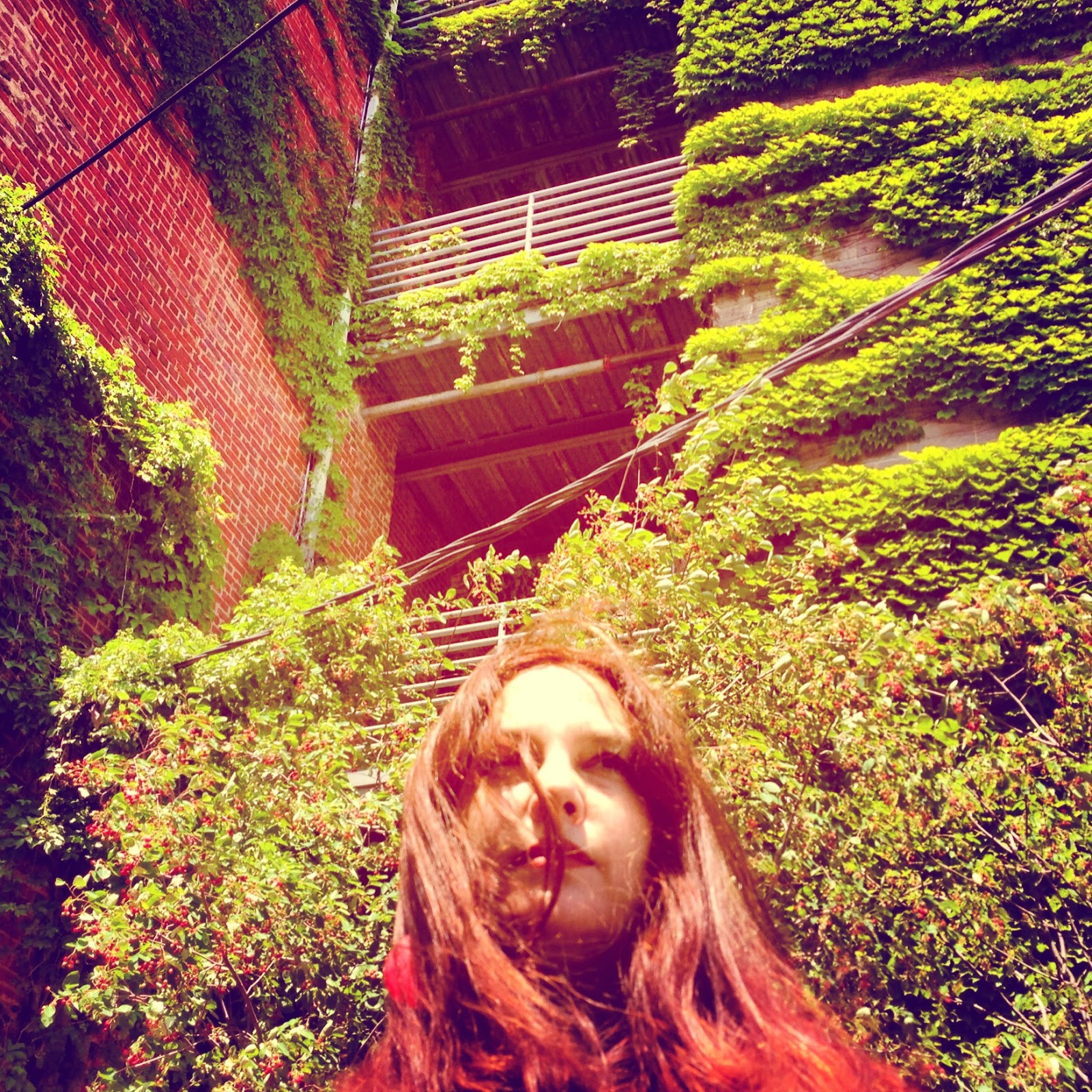
What’s the songwriting process like for The Garment District? I know that other people are involved to some extent with the recording of the material but I’m curious how much, or how little, input other people have on the creation of material for The Garment District?
I’m the one who creates The Garment District’s music and sound. My first intention in creating music is thinking about how I’m going to communicate it to listeners in the best possible way, and fully realize where I want the song, composition or album to be. I’ve had to come to terms with loosening up between recorded material and live shows being two different things. Some aspects to writing and recording music are highly personal and private, almost a process akin to alchemy. You can’t always translate the process to a specific language. It’s also a slow-moving process that reveals itself over time. When I write music, I don’t concretely or consciously think about influences. I try to focus on listening carefully to what’s in my head, and interpreting and giving that form, via my collection of analog instruments, a sense of melody, possibly lyrics, and also allowing what I’m playing to have the chance to evolve into something new or unexpected. I’m very interested in the use of many different analog instruments and how they can work together to communicate a song or piece of music that is inside one’s head. Allowing the instruments, melodies and countermelodies, patterns, and textures to create a sonic universe that transcends the limitations or pre-conceived notions of language, almost like a pre-verbal phase, or a dream state. Lift the limitations imposed by narrative or words, and allow the music to become almost spatial. My way of writing is very naturally melody-based, and the way I approach making music is how I hear everything in my head, combined with how it starts to unfold and evolve as I’m writing and recording it, creating a demo or experimenting with different instruments that are kept out in many rooms of my house. The process is highly personal and intuitive for me. What the song or composition requires and calls for is what dictates how I proceed. I think carefully about each note, melody, pattern, instrument, lyric, layer, etcetera. A lot of thought and care goes into my process, even if the end result is more freeform or experimental. Each individual bit is how it’s communicating itself to me. I’m very interested in an intersection of orchestrated pristine pop music, and the vibe and feel of more ambient experimental stuff. I love that music exists in a particular point in time, with a beginning and an end, it’s temporal and also temporary, and can take you to another place or time, or to your own past, or memory of the past, or be wrapped up in projections of the self, and can be a form of escapism. Unfortunately, most music in our modern digital culture is relegated to background music. I love ambient sounds, so I even get offended at my neighborhood pool when they blast a classic rock station, because I want to hear the ambient sounds of kids playing, the water splashing, the birds, wind in the trees, cars whizzing by, the lifeguard’s whistle; the world around me. It’s such a shame, and can be stifling, that we clog up hearing, noticing, observing and listening, so we can’t take the time to experience things fully. I often take an inventory of sounds around me, making field recordings in my yard, around Pittsburgh, and on trips, for possible use in future music. The writing process fluctuates from song to song. Different methods are used, filling a notebook with ideas, collecting field recordings, making demos with a digital 8-track, song sketches using my iPhone, or recording an entire new song in one sitting. Our house is full of instruments in different rooms to facilitate a freeform process. When you come into our living room, you see our Hammond M3 organ, lots of our records and stereo equipment for all manner of musical formats, LPs, cassettes, CDs… In our basement practice space are numerous keyboards, including a Wurlitzer electric piano which I used all over my new album, as well as a Roland JX3P, Hohner synths, Korg CX-3, several Casios and a Vox Super Continental. I like to have instruments around the house, so that my writing and demo process can sometimes be inspired or informed by where I play them and their varying locations, such as the dramatic views from our top floor. When writing, I may move from keyboard to guitar later, or switch to bass and percussion if needed.
What about recording? As I mentioned before, other people are involved to some extent but I’m curious about their level of involvement in the recording process for the project as well?
In The Garment District, I write and arrange the music and lyrics, so the creation of the material has been me up to this point. That doesn’t mean that I’m not open to new, unexpected and spontaneous contributions that may emerge during recording sessions or live performances, though. My cousin Lucy sings lead vocals on my recordings; we have a very natural and organic process of working on finalizing vocal melodies, which I often write on keyboards, and phrasing for the lyrics, and then adding harmonies. My husband has been a collaborator on some keyboard parts, and is an essential and fantastic listener for me to bounce ideas off and share songs in progress with. Some of my recordings also feature contributions from a few additional friends; some who also perform live with me. They’ve come into the process during the rehearsal phase when I teach them the songs. I do a great deal of planning in advance when it comes to recording with other musicians, writing out parts, and providing them with demos and notes in advance. The rehearsals with drummer Chris Parker and bassist Matt Booth for If You Take Your Magic Slow were very organic and natural, and they learned the songs very quickly. It was a joy to record with the two of them, almost like having my own personal Wrecking Crew. They also play as session musicians on numerous recordings, and have their own bands, and can pick up any manner of music from jazz to country to Brazilian, very fast. I love that they could naturally pick up the feel of my songs, make suggestions that were tasteful, and also play with a high level skill, while still conveying a passionate style of playing that has personality and gets the vibe of my songs. My brother Jeff had input during the recording of the guitar parts that he played on a few of the songs on my new LP. It really depends upon what I feel the song needs to be fully realized in its permanent recorded state. I always have more ideas than actually make it onto the recorded material, in terms of the orchestrated arrangements, and that’s mainly due to limited resources.
Do you enjoy recording? I’m a musician myself and I think that most of us at least, can appreciate the end result of all the time and hard work that goes into making an album when you’re holding that finished product in your hands. But getting to that point, getting things recorded and sounding the way that you want them can be extremely trying to say the least. What’s it like recording for you?
I love recording music. It requires an intense level of focus and concentration, at least for me. I like disappearing or escaping into that very focused world for a given period of time, and blocking out the baggage, noise and distractions of everyday life. It’s also, like writing music, highly personal and almost akin to alchemy; a mix of intuitive and premeditated thought. My level of preparation for being in the studio completely depends upon the context and the song, such as whether I’m recording at home, in a home-based studio, or a larger outside studio that requires definite parameters in terms of scheduling and logistics. For me, it demands a certain mindset, almost like tunnel vision, but in a good way. I love the experience and feeling of creating a sound recording that is both permanent, but something that you can’t see. We’re in such a visually obsessed and visually barraged age, that I think music can hold a very magical place, because it is purely aural and energy, and exists in a certain amount of time; actual vibrations, but also emotional. I think I touched upon more answers to this one above and below.
Is there a lot of time and preparation that goes into working out every single part of a song, where everything is planned and worked out in advance before you head into record and set in stone? Or, do you all head into the studio with a good skeletal idea of how a song’s going to sound like while allowing for some change and variation during the recording process?
I think I touched upon this one above as well, but yes, lots of time for some of the songs; and thought and energy. That said, I also have some material that’s recorded in a more improvisational and spontaneous fashion, and I try to tap into that and remain open to allowing unexpected things to emerge during the recording process. The majority of my music is planned out in advance when I’m recording outside of my home and involving guest musicians. I work in a lot of different ways when writing music and preparing to record, so it could be scribbled on pages in a notebook, demos or sketches made on my 8-digital track, iPhone, piles of paper in my house, or all cemented in my head during bouts with insomnia. While recording at home, I enjoy a more freeform process, so that new ideas for melodies, instrumentation or song structure can emerge during the recording process. The latter can be very organic. There really is not one answer. If I’m working with additional musicians who are coming in just to record my music, then I’m very organized about preparing the arrangements, rehearsing with the musicians in advance of the recording sessions, and organizing my notes about ideas I may want to try in the studio.
Do you head into the studio and let someone else handle the technical aspects of recording so you can concentrate on just getting the best performances possible out of yourselves? Or, do you take a more DIY approach to recording where you handle most things on your own with your own crew of folks, or lack thereof, so you don’t have to compromise on the sound with anyone else, or anything?
There are multiple answers to this question, and ways of working, as well. Parts of my tape, 7-inch and album were recorded at home, either with my husband or me, or often both, handling the engineering. For half of Melody Elder, I worked with Kevin Smith in his home studio in Pittsburgh. Likewise, for half of my new album, I worked with Greg Matecko at his home-based studio, Frankenstein Sound Labs, in Hazelwood, Pennsylvania. My ideal preference, if I had unrestricted time and resources, would be to have a dedicated sound engineer, so that I could focus my energies on the creative aspects of performing and arranging. It is helpful to have a sound engineer to bounce ideas off and to help you try out new things, and compare ideas, in terms of instruments, pedals, effects, mixes, etcetera. It takes a different type of focus and expertise. I love to be heavily involved in all stages, recording, mixing, producing, mastering, but I do also like to work with people who have expertise in engineering and mixing, so that I can focus my creativity, energy and time on the core expression of my music.
Your first release that I know of is 2011’s Melody Elder cassette for the totally awesome Night People Records. Can you tell us a little bit about the recording of the material for that tape? When and where was it recorded? Was that a fun, pleasurable experience? Who all was involved in playing on Melody Elder? Who recorded that material? What kind of equipment was used?
I recorded half of Melody Elder at home, half elsewhere, and a combination of both on some songs. For the songs requiring more intricate production, and where I had mapped out more layered arrangements, such as “Only Air,” “Bird Or Bat” and “Nature-Nurture,” I recorded in the home-based digital audio studio of my friend Kevin Smith from The Artificial Sea, in Pennsylvania. Kevin’s a circuit bender, and has quite a collection of vintage gear and gadgets, such as manipulated and handmade effects pedals and a Commodore 64. He makes and repairs pedals and vintage electronics, and works with beats and samples, so it was a very creative and productive atmosphere working in his cozy studio, located on the third floor of his house; a very laid back experience. It was great to have his various vintage gear at my disposal. I loved using his Crumar, Microsynth and 1960’s Silvertone amplifiers. We both used to live in New York City, and have some friends in common there, but our paths didn’t cross until we met in Pittsburgh, where we actually used to live two doors down from each other at different times. On Melody Elder, I play all of the instruments. Kevin helped me create the right beats for a few songs, and also added some samples to one song, and some circuit bending sounds to another track. We recorded all of the vocals on Melody Elder in Kevin’s studio, with my cousin Lucy singing lead vocals, and the two of us doing backing vocals together. The other half of Melody Elder was recorded at home, aka Golden Mountain, along with my husband Greg. Songs such as “The Parlance,” “Apple Bay Day,” and “Supermoon” are a bit more improvisational, and were recorded with more emphasis on the feel of the first take. Since I’m interested in an intersection of orchestrated pristine pop music and the vibe and energy of more ambient experimental sounds, I tried to combine both on Melody Elder and If You Take Your Magic Slow.
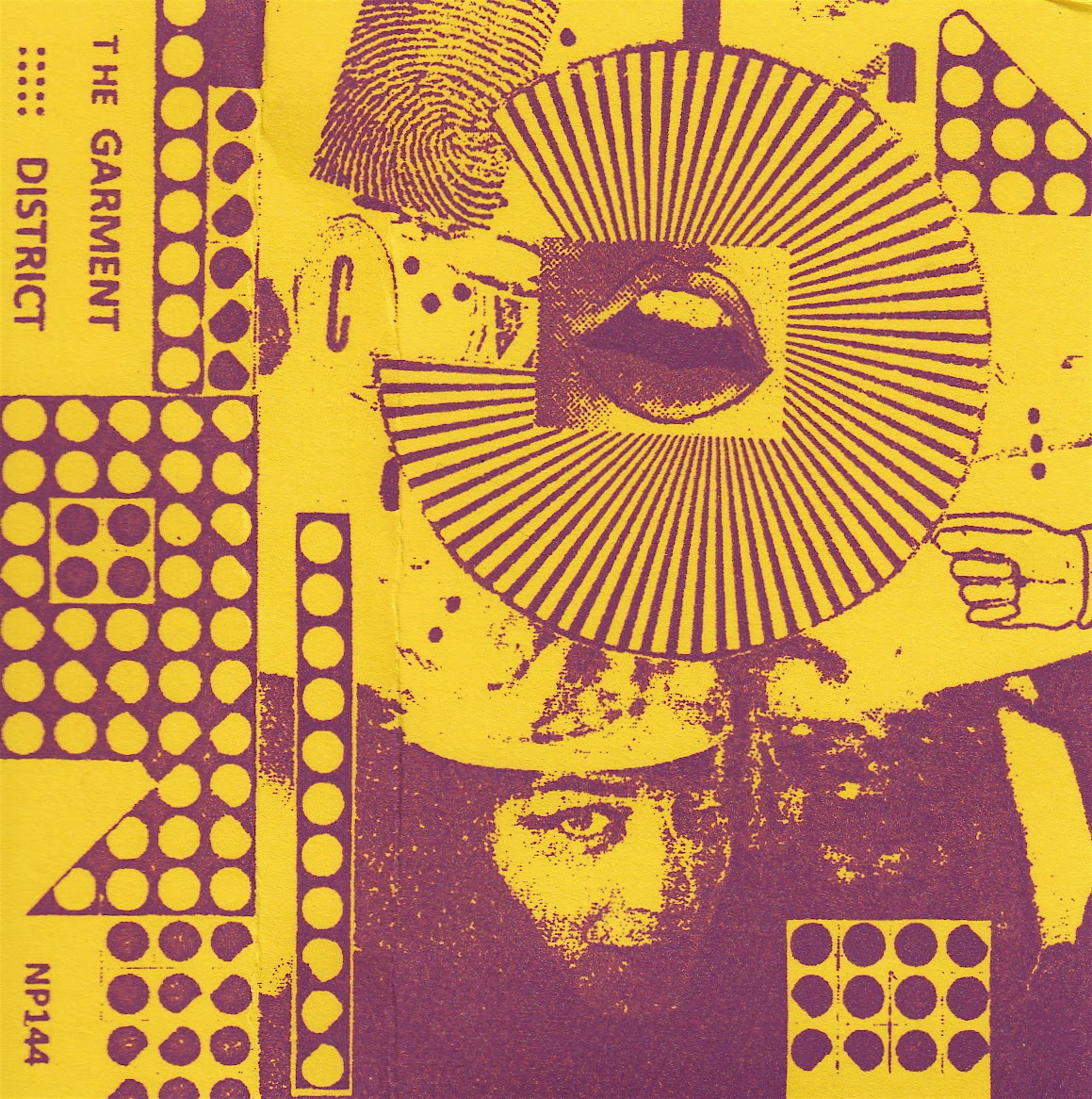
In 2012 you released a 7-inch single limited to 300 copies which featured a remix of “Nature Nurture” from the Melody Elder cassette, but it also featured two brand new tracks, “Vigor” and “Miraculous Metal”. Were those tracks left over from the earlier Melody Elder sessions, or were those tracks recorded specifically for that single? If they were recorded for the single can you tell us about the recording of that material?
It was a massive honor to have “Nature-Nurture” remixed by Sonic Boom, one of my musical heroes. Today, I can listen to his music from the 1980s and the 1990s, and it truly sounds in some ways like a new experience, fresh and tactile and with new dimensions uncovered and revealed. I had met Sonic Boom a few times over the years, and couldn’t really imagine anyone else remixing a song of mine, at least that song in particular. He worked on it in his New Atlantis Studios in England, and encouraged feedback and input from me during the process. When he was just about finished, and we were discussing the song’s final few measures, he suggested that I record a new part to replace what I had played on the original, and to consider altering the style of the final melody. I loved the process of recording a new keyboard melody quite spontaneously late one night in my house in a different time zone from him, and having it just sit naturally within the remix he did. So many remixes can sound gimmicky, or only involve elements of beats, or seem to clutter up a song, but I loved that he almost stripped away some of the song, yet was able to make it sound more expansive while keeping its authentic core in place and somehow clarifying its presence. I’ve always been very interested in relationships between sound, instrumentation, melodies, and texture, as made by a wide variety of instruments, from my own experience in previous bands, to 60’s and 70’s horror films, to BBC Radiophonic Workshop pioneers, to contemporary installation art, and an overall hyper appreciation of found sounds around me in daily life. Much of Melody Elder, which is a forty-minute tape, is instrumental music, so to me “Miraculous Metal” and “Vigor” are natural extensions of that album, with new elements of course, and they reflect my personal sensibilities in terms of writing and recording music. I wrote “Miraculous Metal” soon after I released my tape on Night-People, and am thrilled that it found a home on vinyl, alongside a remix by one of musical heroes. I think the three songs work together almost like a mini-album, and that they explore a variety of my interests as far as making music. I love film scores and incidental music, and the idea of stretching what the traditional definition or perception of a composer is in pop culture. “Vigor” includes an assemblage of audio snippets I recorded over several months’ time in my western Pennsylvania environment. I constantly document sounds that interest me, for whatever reason; regional dialects, computerized voices, experiences in places ranging from public parking garages, to public access television. I love putting these random fleeting, and sometimes surreal, moments and experiences of sound into new contexts that are permanently recorded. I also like exploring the intersection of the public and the private, via sound communication. “Vigor” is special to me because it’s a long distance collaboration with Kevin Smith, who’s now living in Oakland, California.
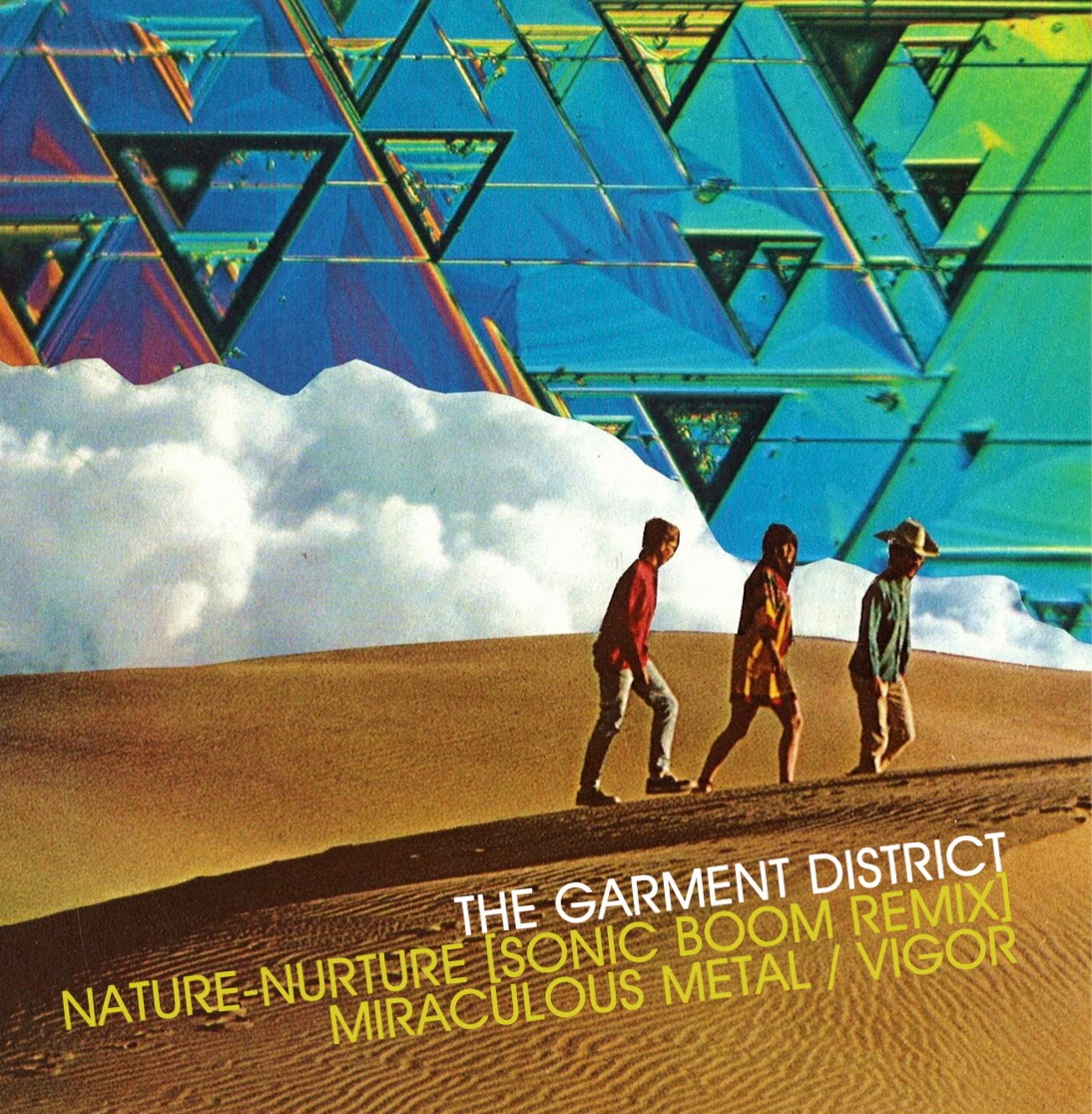
You recently released your sophomore full-length, If You Take Your Magic Slow coming back again to Night People and this time limited to 400 copies. Was the recording of the material very similar to your earlier session(s)? Where and when was it recorded? Who recorded it and what kind of equipment was used? Did you try anything radically new or different when it came to the songwriting or recording of the material for If You Take Your Magic Slow? What can our readers expect from the new album? Who was all involved in playing on this album?
In a process that was similar to making Melody Elder, half of If You Take Your Magic Slow was recorded at home, while the other half was recorded in a friend’s home-based studio. This time, I had a great opportunity to work with Greg Matecko at Frankenstein Sound Labs in Hazelwood, Pennsylvania, a sleepy post-Industrial town just outside of downtown Pittsburgh. With my LP, I knew that I wanted to have full band arrangements and additional instrumentation on many of the songs, and I worked very hard on the instrumentation prior to going into the studio. I still wanted to have a balance of songs that are perhaps more improvisational, spontaneous and recorded at home, with more emphasis on the feel and vibe of the first take, and then juxtapose them with more carefully arranged work, with close attention to structure, melody lines and texture. I feel like the new album being more orchestrated and arranged, is perhaps a return to music I had been a part of in the past, and a logical and authentic extension of the way I hear music and approach songwriting.
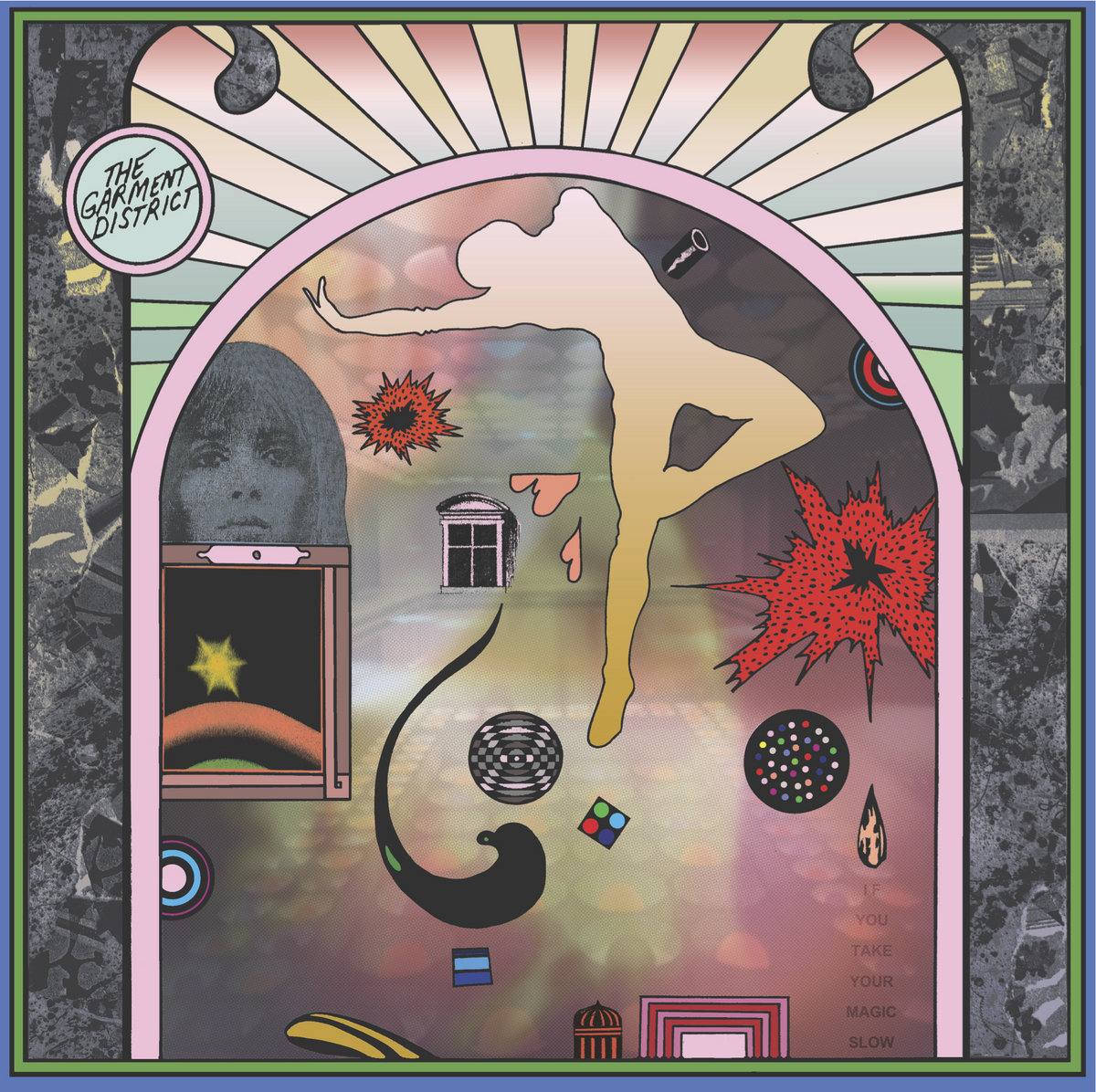
I feel so fortunate to have Matt Booth (Pittsburgh) on bass and Chris Parker (NYC, Pittsburgh) on drums for half of the new album. They’re phenomenal musicians and have a rare combination of technical musical skills, along with a great sense of feel, timing and groove. They’re both very organic players. It was like having my own personal Wrecking Crew with those two handling the rhythm section for half of this album. Rehearsing in advance with them was a joy. They’re naturals, and were able to pretty instantaneously translate from my notes, demos and what I asked for and described for the songs in terms of bass and drums. They were also pros in the studio, and I’m inspired as a musician when I play with them. It was a ton of fun. We recorded the basic tracks for bass and drums with them in Greg Matecko’s home studio, surrounded by vintage objects and instruments, tools, reels of tapes, furniture, and layers of Hazelwood history and memories along the mighty Monongahela River outside of Pittsburgh.
Does The Garment District have any music that we haven’t talked about yet, maybe a demo or a song on a compilation that I don’t know about?
Yes! In 2013, I was extremely honored to be invited to contribute a new track to ESOPUS Magazine’s 10th anniversary issue, called Special Collections. A Brooklyn-based print magazine, ESOPUS invited me to contribute a previously unreleased song for the CD that comes with their 10th Anniversary Edition, two hundred and forty pages devoted to personal and institutional archives. Each publication comes with a companion CD and follows a theme. Musicians were given the task of writing a song based on a personal object and asked to submit a photo of their object along with the track. My song, “Sullivan’s Island”, is inspired by my Little Leather Library edition of Edgar Allan Poe’s 1843 short story “The Gold-Bug,” set on Sullivan’s Island, South Carolina, where the author was posted at Fort Moultrie while serving in the army, and also where I’ve visited during summers with family since age fifteen. Other musicians on the CD include Julian Lynch, Jeff Mercel of Mercury Rev, Prince Rama, Cloudland Canyon, Sam Phillips, Lee Sargent from Clap Your Hands Say Yeah, Wesley Stace, and Cassandra Jenkins. The multi-format publication features rare and extensive archival materials from The Museum of Modern Art, American Museum of Natural History, Mad Men creator Matthew Weiner, fashion designer and artist Stephen Sprouse, Benedictine priest and concrete poet Dom Sylvester Houédard, Galaxie 500’s Dean Wareham, a poster of cassettes from the archives of artist and poet Christopher Knowles, and images by D. James Dee, a.k.a. “the SoHo photographer.” I also have songs on the Crash Symbols (Return to Dope Mountain) and Moon Glyph (Various Artists: OPAL I & II) compilations.
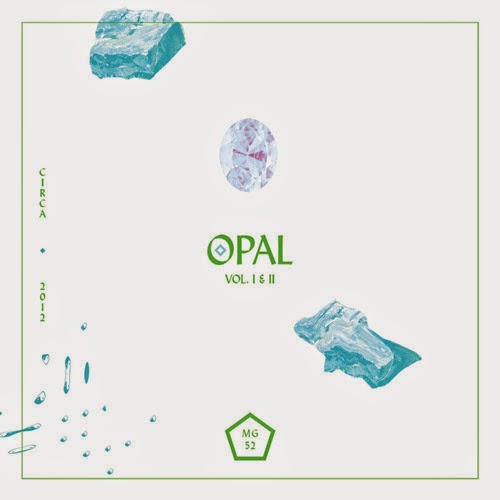
With the release of If You Take Your Magic Slow being pretty recent at this point, are there any other releases in the works or pending from The Garment District?
Yes! In the spring of 2015, I will have a limited-edition CD release on Kendra Steiner Editions, an independent label and press dedicated to experimental music and contemporary poetry based in San Antonio, Texas. I’ll also have a new song included on a forthcoming vinyl compilation and mix series released by the French label, La Station Radar. I’ve also already started working on demos for what I hope will evolve into additional release(s) beyond those two projects.
Where’s the best place for our US readers to pick up copies of your music?
Stop into your local independent record store and see if they have it and if they don’t, they can order it from Midheaven Mailorder! It’s also available directly from Night-People. If your readers are lacking a turntable in their lives, they can purchase it from all major digital retailers, iTunes, eMusic and Amazon, with my personal favorite being Boomkat.
What about our poor international and overseas readers? With the international postage rates the way that they are at this point, I try to provide our readers with as many possible options for snagging imports as I can!
Norman Records, Forte, Juno, Midheaven, Bis Aufs Messer, Beethobear Records, Clear Spot or Meditations.
And where would the best place for our interested readers to keep up with the latest news, like upcoming shows and album releases be at?
My website or Facebook page.
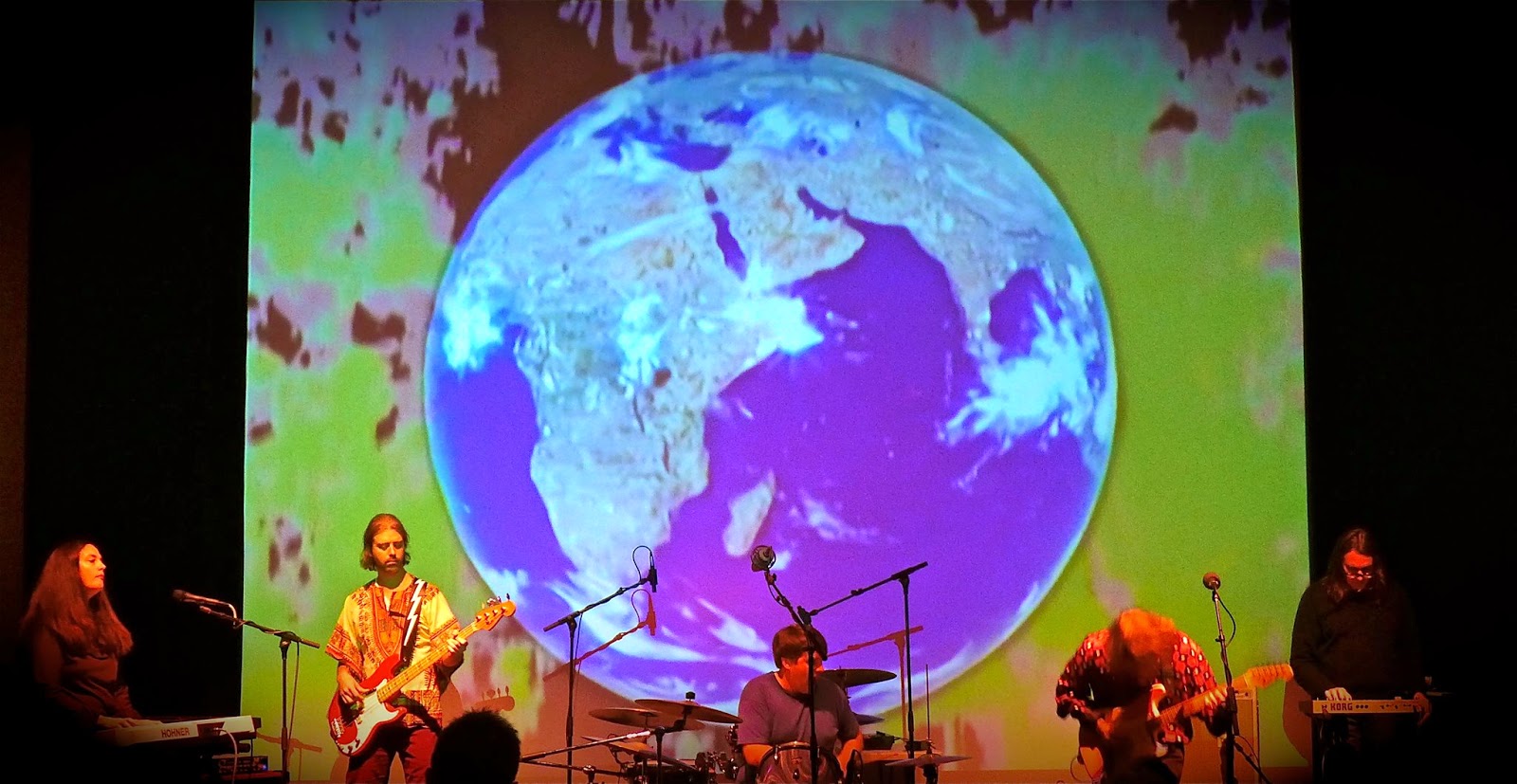
Are there any major goals or plans that you’re looking to accomplish in the rest of 2014 or 2015?
I’ll be working on new material for my spring 2015 release for Kendra Steiner Editions, an independent label and press dedicated to experimental music and contemporary poetry based in San Antonio, Texas. I hope to perform live more regularly and do a limited amount of touring. And then more recordings.
I know that you play out occasionally but I don’t know how often that is, or if you ever spend any time out on the road? Do you tour at all? If so, do you enjoy being out on the road and what’s life like on tour for you?
I’m starting to perform live with a bit more regularity, which I’m extremely excited about. I hope to do a limited amount of touring soon. In my old bands, I toured quite often, including extensively in the US, and also in Canada, Scandinavia and Europe. I loved most aspects of touring, though that was then and this is now… On October 11th, The Garment District will be performing as part of HughShows Live, at Eide’s Entertainment, a massive music and comic store located in Downtown Pittsburgh. The new series is the brainchild of Pittsburgh-based music photographer and blogger, Hugh Twyman, and also serves as a donation event for the Homeless Children’s Education Fund.
As I said, I know that you do play out live and I’ve asked a little bit about who’s usually involved in the band, but what about the band in a live setting? Is that the same pool of people that you draw from, or how do you approach that?
The Garment District is me, with some contributions from family and friends that can involve various configurations for recording material and performing live. See answer to question one for detailed information!
Who are some of your favorite acts that you’ve had a chance to perform with?
Mayo Thompson, Neutral Milk Hotel, Silver Apples, Belle & Sebastian, Broadcast, Bedhead, The Olivia Tremor Control, Of Montreal, The Aislers Set, Luna, The Lucksmiths, Yo La Tengo, Ghost, and St. Etienne.
In your dreams, who are you on tour with?
Alive or dead? I’ll answer in terms of both reality and fantasy: Syd Barrett, Soft Machine, Tyrannosaurus Rex, Kaleidoscope (UK), New Order, Sun Ra, and Lee Hazlewood.
Do you give a lot of thought to the visual aspects that represent the band to a large extent? Stuff like fliers, posters, shirt designs, cover and that sort of thing? Is there any kind of meaning or message that you’re trying to convey with those sorts of things? Do you have anyone that you usually turn to in your times of need when it comes to that sort of thing?
Yes, though presently I wish I had more time to devote to this aspect! I’m also an indie crafter, I do a ton of photography, and I sew and make greeting cards, so I always have ideas for creating Garment District visuals. So far, my central visual endeavor as far as The Garment District, has been to work with several talented video artists, including Thaddeus Kellstadt from Iowa City, Keith Tassick from Pittsburgh, and Gordon Nelson from Rochester. I love doing this kind of multi-disciplinary music and visual work and look forward to doing more. Keith created a collaborative video for my song “Nature-Nurture” that was a 2012 Design, Art and Technology Awards Finalist selected by the Pittsburgh Technology Council. The video features 700-plus still photographs that I took of Western Pennsylvania television news over the course of one year. Thad just created two videos for songs on my new album, “Secondhand Sunburn” and “Cavendish on Whist,” and they also incorporate some vintage Polaroid photos of my mom, and some footage I took. I feel that Thad’s aesthetic and approach to video art is a perfect visual counterpart to my music, with an interesting blending of psychedelic imagery, digital video technologies and editing, and a hand-crafted collage-like creative practice that really plays with perspective, memory, vision, depth and flatness. We plan to continue collaborating on video and music projects in the future. The artwork for my 7-inch on La Station Radar was created by the talented Seattle based collage artist Jesse Treece and I loved having the opportunity to work with him. I discovered his work via Tumblr right around the same time he happened to hear Melody Elder, so we connected in a very natural way. He created the front and back covers, and the labels, for my 7-inch and I even mailed him some pages from my own collections of vintage National Geographic and LIFE magazines; my grandmother saved every issue of LIFE in plastic sleeves in her garage and I recently inherited them, including some favorites with Angela Davis portraits, and artwork by Milton Glaser on the covers. Shawn Reed of Night-People created the artwork for my tape and LP. Although I love having a hand in and participating in all of the details of any creative project I’m working on, it was interesting for me to step aside there for both my tape and album. It’s funny because a lot of people think that’s a picture of me on the Melody Elder j-card, but it’s not. I couldn’t be more thrilled about the album and tape artwork Shawn created. With the new album, Shawn asked me to send him some photos I had taken, band photos and any source materials or images that inspire me, to possibly work with. I’m astounded with the LP artwork he created and I feel that it’s the perfect visual counterpart to my music. I love the way he uses 2-D and pop art flatness within highly dimensional and textured layers. Again there’s that kind of tension between surface and depth, and texture and flatness, and I think that’s something I’m drawn to in music. The back cover photo of me was taken by my husband Greg, and the insert photo of my cousin Lucy was taken by my aunt. I save so much paper ephemera in my craft room to use as source material for future projects…
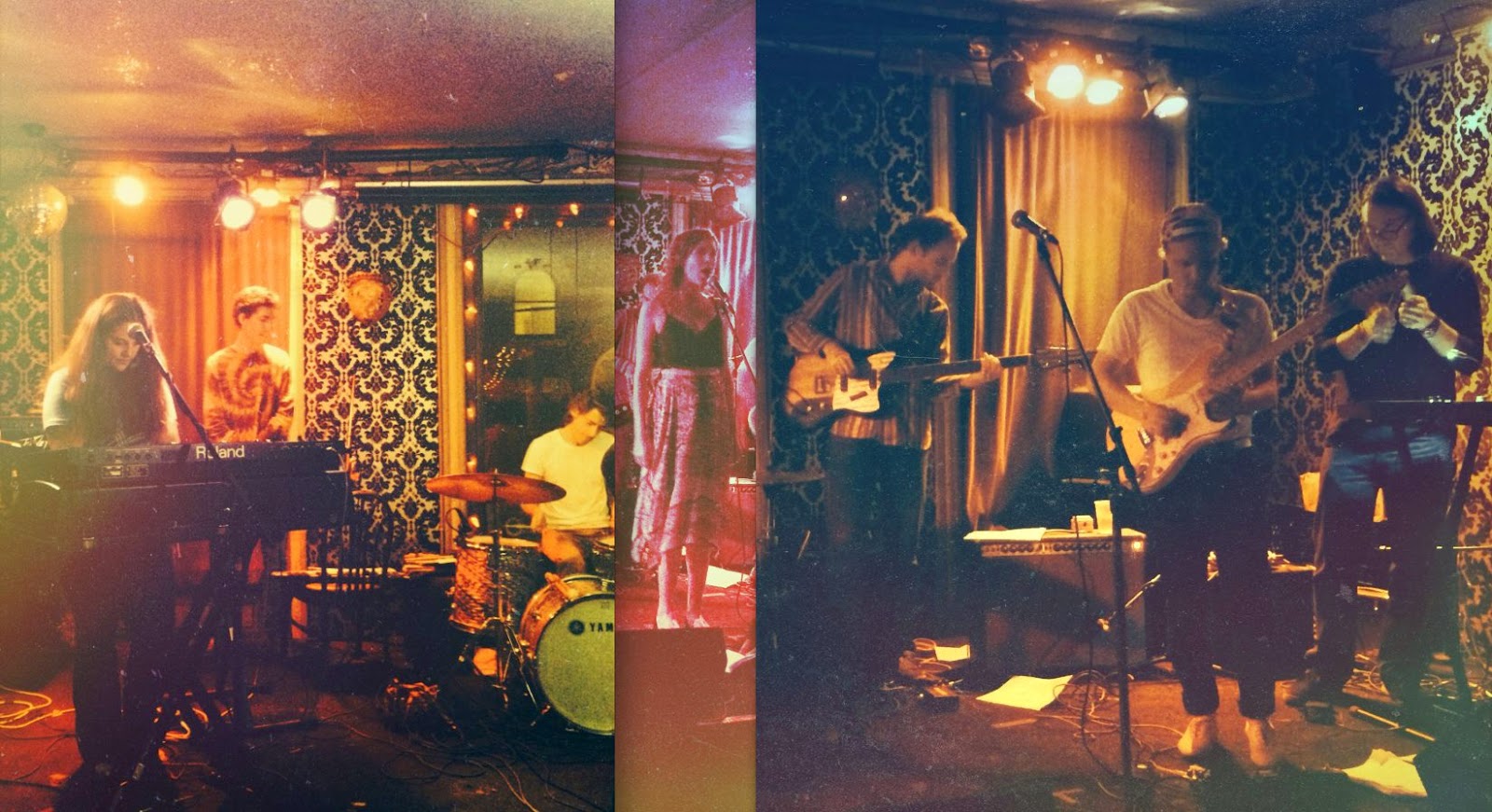
With all of the various methods of release that are available to musicians today I’m always curious why they choose and prefer the various mediums that they do. Do you have a preferred method of release for your own music? What about when you’re listening to or purchasing music? If you do have a preference, can you tell us a little bit about why?
Vinyl first and foremost, for listening to, purchasing and releasing my own music. For many reasons, the superior audio quality, the tactile, spatial and visceral nature of the listening experience, the social aspects that can engage listening with others, the ritual, and the analog technology. In terms of releasing my music on vinyl: with If You Take Your Magic Slow, I hope to take listeners on an emotional and aural journey throughout. This is something I worked hard toward as a concept for the music, especially as a full-length album. I think very carefully about song order and arrangements, and this context matters to me. I have always loved the concept of an album as a complete experience curated by the maker, from start to finish, like a trip into a fantasy world, or in and out of subconscious states, which is what I hope it can do for listeners. This is how so many significant old albums of my life work in my mind. I do hope that my music can provide a kind of escape from all of the multitasking, distractions and fragmented attention-depleting realities of daily life. I love the idea of creating a musical itinerary for people to listen to, that they have to sit still and focus on to truly absorb and internalize; make time for. That way, the music can go in a variety of directions once it’s occupying physical space and people’s internal consciousness. Likewise, I don’t just have one way of writing and creating music. I also love cassettes, and listen to them often, both new purchases and tapes I saved from my high school days. I do want my music to be available for purchase digitally, for those who don’t own turntables or tape decks, though both are fairly easy and affordable to obtain. I was a kid during the heyday of cassette culture, constantly making mix tapes with hand-designed artwork. Those tapes included songs by bands I still love and listen to on a regular basis, Game Theory, New Order, The Velvet Underground, Prince, The Smiths, Galaxie 500, The Go-Betweens, Orange Juice, The Feelies, My Bloody Valentine, and The Jesus and Mary Chain. When I purchased tapes, I would sometimes remake the artwork myself, and I still have crates filled with those original tapes. So, when I sent some music to Shawn at Night-People, I was already very interested in releasing a tape. In my previous bands Saturnine, The Ladybug Transistor,and The New Alcindors, I’ve released material on vinyl, 7-inch and CD, but never on cassette, so it had long been a goal. I’m very drawn to the tactile nature of the object, slightly precious and a bit fragile, and to the limited-edition nature of tapes and tape artwork. For me, releasing music on tape is a natural extension of my participation in the DIY/indie craft scene, which has occupied a lot of my time. Today, so many people listen to music out of context. I’m not saying that a song or composition shouldn’t be able to stand alone, because it absolutely should, but I personally love the extended focused experience of a vinyl album, tape or 45.
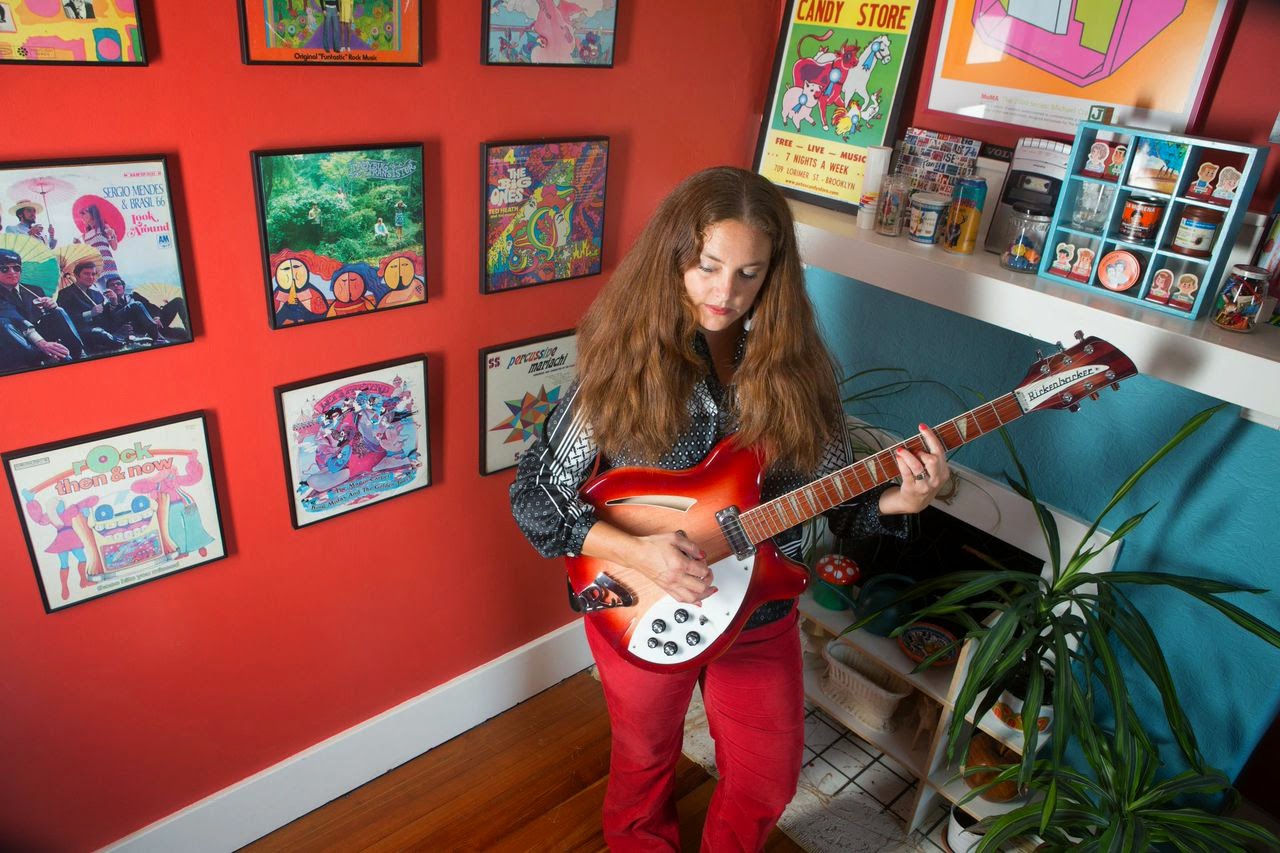
Do you have a music collection at all?
Yes. Overflowing record shelves and turntables in several rooms and filling our garage. Nothing is organized in any kind of OCD way though.
I grew up around a good collection of seriously great music. On top of that, my pops would take me out to the local shops and snag me stuff that I was interested in all the time. There was something magical about kicking back with a set of headphones, reading the liner notes, staring at the cover art and just letting the whole thing carry me off on this trip. As a result, I developed a deep appreciation for physically released music from a young age. There’s something irreplaceable about having a physical object to hold and experience along with the music. Do you have any such connection with physically released music and if so, can you talk a little bit about why?
I share these exact memories, experiences and feelings. Some of my answers above even touch upon all of this. Because of my musical influences as a child, such as growing up with my parents’ extensive LP collection and having their 1960s and 1970s-era records literally be our first toys during the pre-verbal stage, and listening to cassettes and 8-tracks in the car, I’ve always felt deeply connected on a personal level to the LP format, and I feel that it is the ideal physical vehicle for transferring the way I hear music and approach music making. For me, album art is also deeply integral to the sounds heard within. The artwork Shawn Reed created for my LP is somewhat evocative of art from my childhood, and I’m so happy with how it turned out because the cover reminds me of familiar things, yet is also contemporary and original, which is pretty serendipitous. I feel inseparable from the sort of LP aesthetic that it coveys to me, and I’m so grateful for Shawn for that powerful link between sound and visuals.
Like it or not, digital music is here in a big way. In my opinion though digital music is just the tip of the iceberg, when you combine it with the Internet that’s when you’ve really got some revolutionary on your hands. Together, they’ve exposed people to the literal world of music that they’re surrounded by and allowed for unparalleled amounts of communication between bands and their fans, despite geographic boundaries eradicating limitations from location that would have crippled bands even a few years ago. On the other hand though, nothing is ever just peachy keen! While people are being exposed to more and more music they’re not necessarily interested in paying for it and illegal piracy is running rampant these days. As an artist during the reign of the digital era, what’s your opinion on digital music and distribution?
Ah, the elephant in the room. I would love to discuss this one in person over drinks! While I prefer to listen to music on vinyl, I do absorb a lot of new music, and some rare finds and mixes, via discoveries made because of music blogs and mp3s. I firmly believe that musicians, and all artists, should be paid for their completed creative works. How we get to that end result is the difficulty. I’ve gained listeners from all around the world via web life, and I used SoundCloud and Bandcamp to share samples of my releases, the former, and to sell my sold-out tape, the latter. I am massively grateful and excited about that kind of expansive connectivity, which has also led to wonderful new opportunities for me as a musician. All of my music is for sale via all of the major digital retailers, so naturally I, as does my label, hope that anyone enjoying a stream of The Garment District will be moved to purchase mp3s or ideally, an actual album. There’s been a system in place for decades used by songwriters and publishers to collect royalties for radio play, and such a system could have been improved upon and expanded, especially in terms of recent revelations about unethical loopholes, in more just ways for streaming. What sickens and saddens me about our current Internet-obsessed society, is that our economy and culture seem to place so much stock, quite literally, on the tech developers, and in turn, wealthy investors and stock holders, who create apps, servers, websites and software. Yet we seem to want to devalue and dismiss the actual creators and producers of the content that populates all of these apps, servers, websites and software. Once a museum is built, do we expect all of the artwork to get there for free? I try to keep up with the latest essays by people such as David Lowery and Eric Ambel, so that I can attempt to digest and interpret all sides of this complex issue. As a musician today, who also released music during the 1990s it’s difficult to not be conflicted. The crowd-sourced universe seems to have gotten rather messy, to such an extreme that we’re erasing context and accountability in a lot of areas, but I digress…
I try to keep up with as much good music as I possibly can. Is there anyone from your local scene or area that I should be listening to I might not have heard of before?
From Pittsburgh Jackie McDowell, Matt McDowell, d/s miller, Jim Lingo, and The Van Allen Belt. From Eastern Pennsylvania, Blues Control.
What about nationally and internationally?
I listen to so much music from previous decades, and also to a ton of reissues. As far as contemporary music, I’m loving sounds by Samantha Glass, White Fence, Blackhoods, Persona La Ave, the Twerps, Halasan Bazar, Tara King th., The Cyclist, Jacco Gardner, Scott and Charlene’s Wedding, Blank Realm, Liam Hayes, KWJAZ, and Rangers, etcetera, etcetera.
Do you have a music collection at all?
Yes. Overflowing record shelves and turntables in several rooms and filling our garage. Nothing is organized in any kind of OCD way though.
I grew up around a good collection of seriously great music. On top of that, my pops would take me out to the local shops and snag me stuff that I was interested in all the time. There was something magical about kicking back with a set of headphones, reading the liner notes, staring at the cover art and just letting the whole thing carry me off on this trip. As a result, I developed a deep appreciation for physically released music from a young age. There’s something irreplaceable about having a physical object to hold and experience along with the music. Do you have any such connection with physically released music and if so, can you talk a little bit about why?
I share these exact memories, experiences and feelings. Some of my answers above even touch upon all of this. Because of my musical influences as a child, such as growing up with my parents’ extensive LP collection and having their 1960s and 1970s-era records literally be our first toys during the pre-verbal stage, and listening to cassettes and 8-tracks in the car, I’ve always felt deeply connected on a personal level to the LP format, and I feel that it is the ideal physical vehicle for transferring the way I hear music and approach music making. For me, album art is also deeply integral to the sounds heard within. The artwork Shawn Reed created for my LP is somewhat evocative of art from my childhood, and I’m so happy with how it turned out because the cover reminds me of familiar things, yet is also contemporary and original, which is pretty serendipitous. I feel inseparable from the sort of LP aesthetic that it coveys to me, and I’m so grateful for Shawn for that powerful link between sound and visuals.
Like it or not, digital music is here in a big way. In my opinion though digital music is just the tip of the iceberg, when you combine it with the Internet that’s when you’ve really got some revolutionary on your hands. Together, they’ve exposed people to the literal world of music that they’re surrounded by and allowed for unparalleled amounts of communication between bands and their fans, despite geographic boundaries eradicating limitations from location that would have crippled bands even a few years ago. On the other hand though, nothing is ever just peachy keen! While people are being exposed to more and more music they’re not necessarily interested in paying for it and illegal piracy is running rampant these days. As an artist during the reign of the digital era, what’s your opinion on digital music and distribution?
Ah, the elephant in the room. I would love to discuss this one in person over drinks! While I prefer to listen to music on vinyl, I do absorb a lot of new music, and some rare finds and mixes, via discoveries made because of music blogs and mp3s. I firmly believe that musicians, and all artists, should be paid for their completed creative works. How we get to that end result is the difficulty. I’ve gained listeners from all around the world via web life, and I used SoundCloud and Bandcamp to share samples of my releases, the former, and to sell my sold-out tape, the latter. I am massively grateful and excited about that kind of expansive connectivity, which has also led to wonderful new opportunities for me as a musician. All of my music is for sale via all of the major digital retailers, so naturally I, as does my label, hope that anyone enjoying a stream of The Garment District will be moved to purchase mp3s or ideally, an actual album. There’s been a system in place for decades used by songwriters and publishers to collect royalties for radio play, and such a system could have been improved upon and expanded, especially in terms of recent revelations about unethical loopholes, in more just ways for streaming. What sickens and saddens me about our current Internet-obsessed society, is that our economy and culture seem to place so much stock, quite literally, on the tech developers, and in turn, wealthy investors and stockholders, who create apps, servers, websites and software. Yet we seem to want to devalue and dismiss the actual creators and producers of the content that populates all of these apps, servers, websites and software. Once a museum is built, do we expect all of the artwork to get there for free? I try to keep up with the latest essays by people such as David Lowery and Eric Ambel, so that I can attempt to digest and interpret all sides of this complex issue. As a musician today, who also released music during the 1990s it’s difficult to not be conflicted. The crowd-sourced universe seems to have gotten rather messy, to such an extreme that we’re erasing context and accountability in a lot of areas, but I digress…
I try to keep up with as much good music as I possibly can. Is there anyone from your local scene or area that I should be listening to I might not have heard of before?
From Pittsburgh Jackie McDowell, Matt McDowell, d/s miller, Jim Lingo, and The Van Allen Belt. From Eastern Pennsylvania, Blues Control.
What about nationally and internationally?
I listen to so much music from previous decades, and also to a ton of reissues. As far as contemporary music, I’m loving sounds by Samantha Glass, White Fence, Blackhoods, Persona La Ave, the Twerps, Halasan Bazar, Tara King th., The Cyclist, Jacco Gardner, Scott and Charlene’s Wedding, Blank Realm, Liam Hayes, KWJAZ, and Rangers, et cetera.
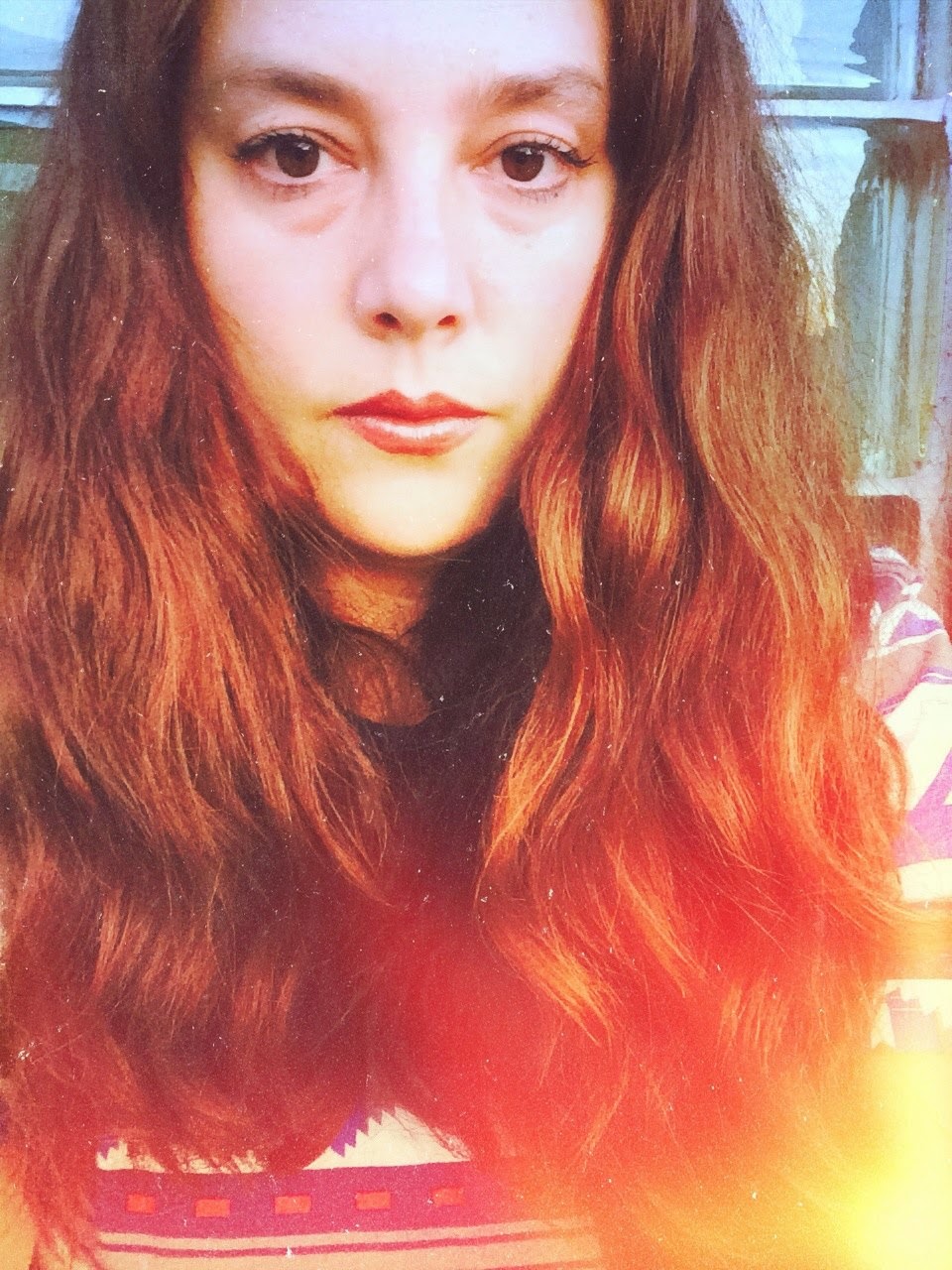
Thanks so much for taking the time to talk to me, I know this wasn’t short but I seriously appreciate you taking the time to make it this far, it was awesome to learn so much about you and your music, and I hope you had at least a little fun looking back on everything you’ve managed to accomplish over the past few years! Before we call it a day I’d like to open the floor to you for a second. Is there anything that I could have possibly missed or that you’d just like to take this opportunity to talk to me or the readers about at this point?
Here are some mix tapes I was invited to make, containing some of my favorite music, to share with your readers:
This Way Please: mix for Hartzine
Fall in Love with the Light: mix for Joseph Ghosn’s blog
Roman Rathert
DISCOGRAPHY
(2011) The Garment District – Melody Elder – Digital, Cassette Tape – Night People Records
(2012) The Garment District – “Nature Nurture (Sonic Boom Remix)” – 7” – La Station Radar (Limited to 300 7” vinyl copies)
(2014) The Garment District – If You Take Your Magic Slow – 12” – Night People Records (Limited to 400 12” copies) Vinyl and Digital
“When Raven Claws the Sky” included on Various Artists: OPAL I & II (Moon Glyph, 2012)
“Bird Or Bat Remix” by Buscrates 16-Bit Ensemble included on Return to Dope Mountain (Crash Symbols, 2013)
“Sullivan’s Island Lighthouse Keeper” included in ESOPUS 20: Special Collections (2013)
Headline photo: John Colombo
The Garment District Official Website / Facebook / Instagram / SoundCloud / Bandcamp / YouTube

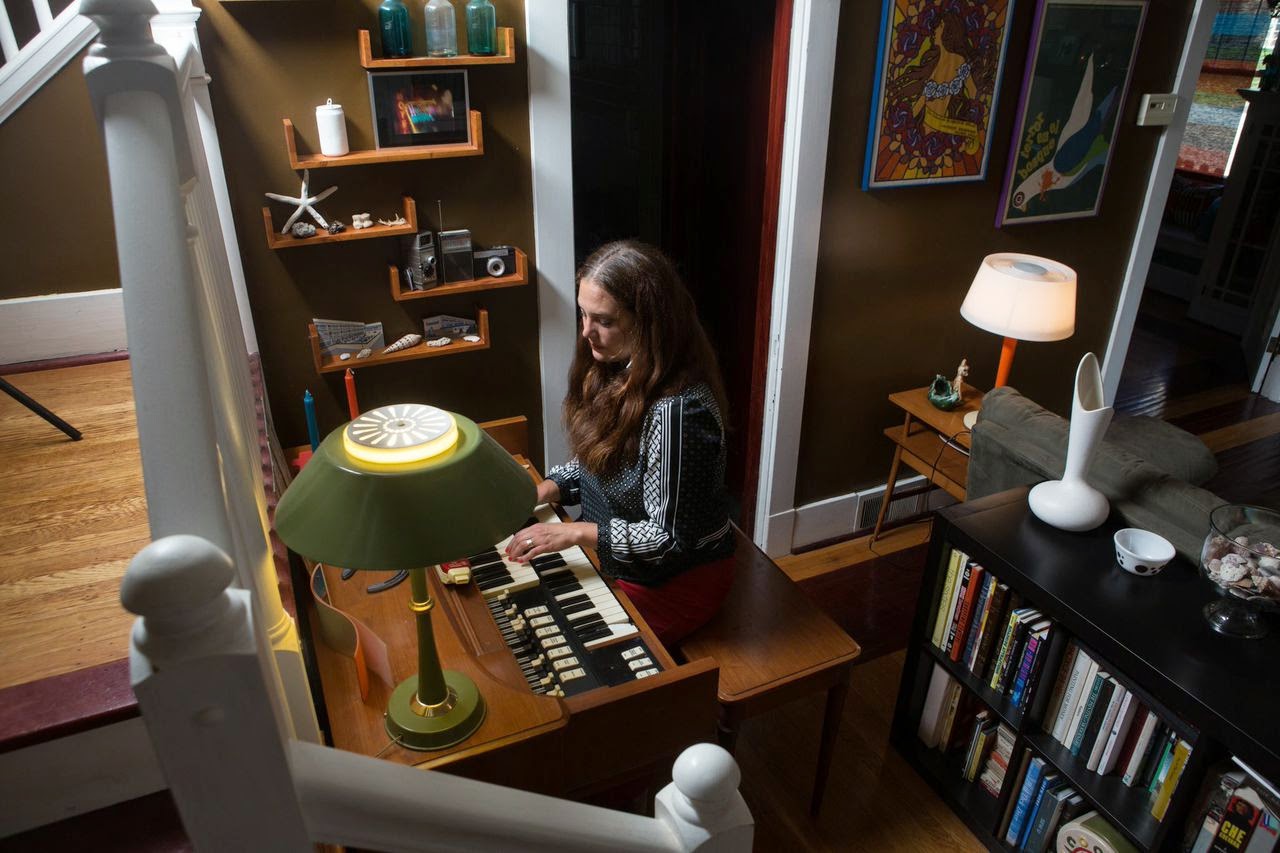
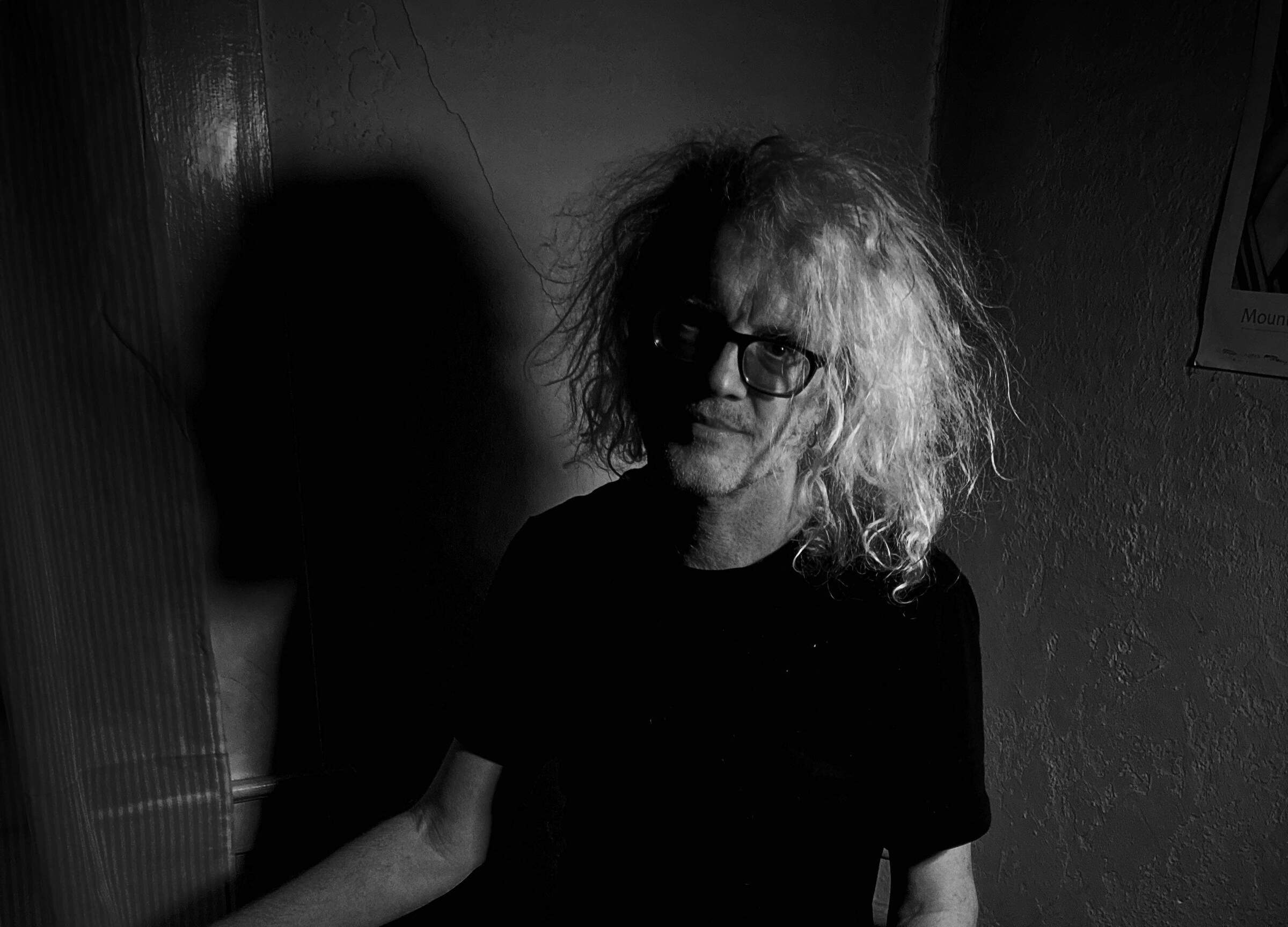
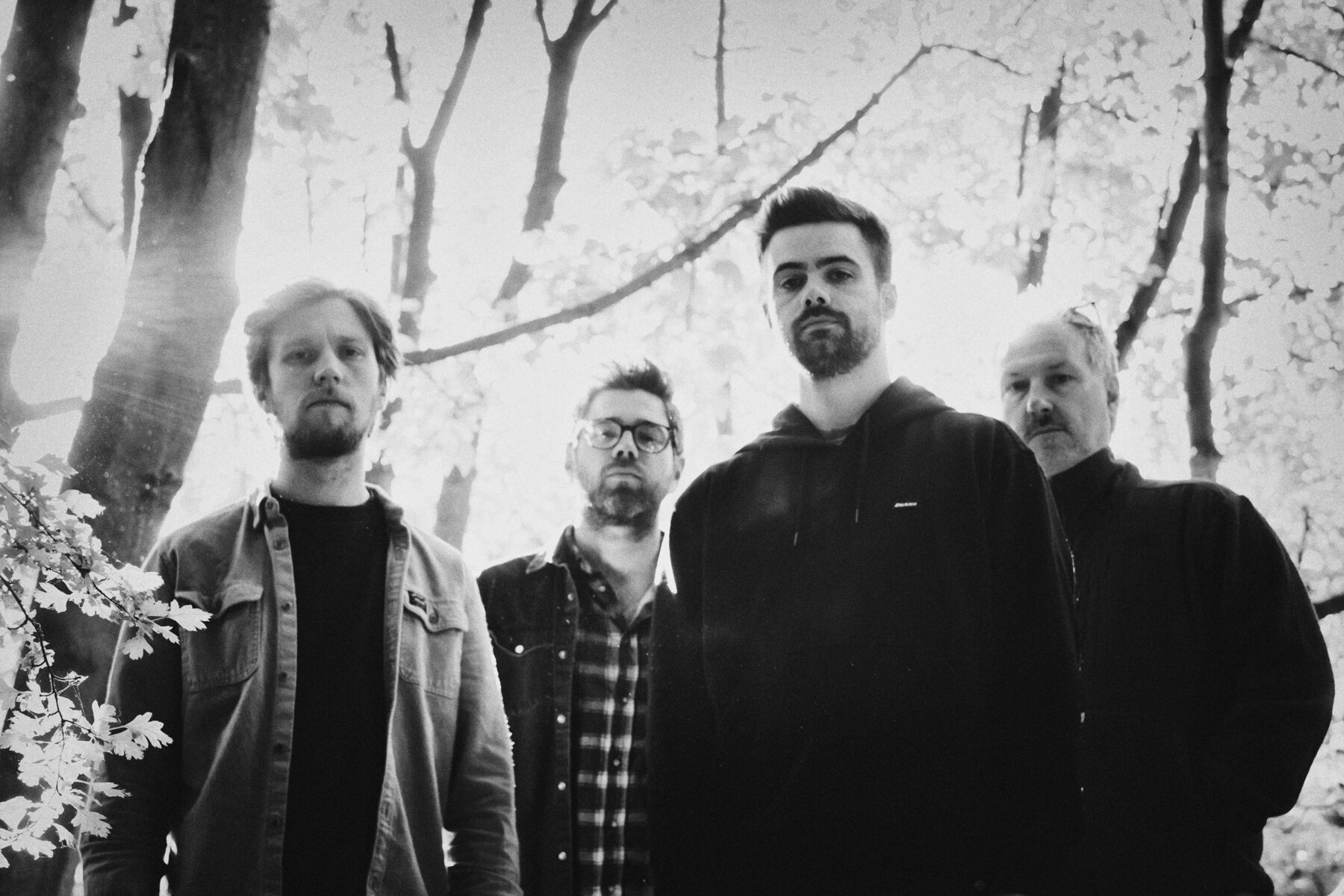
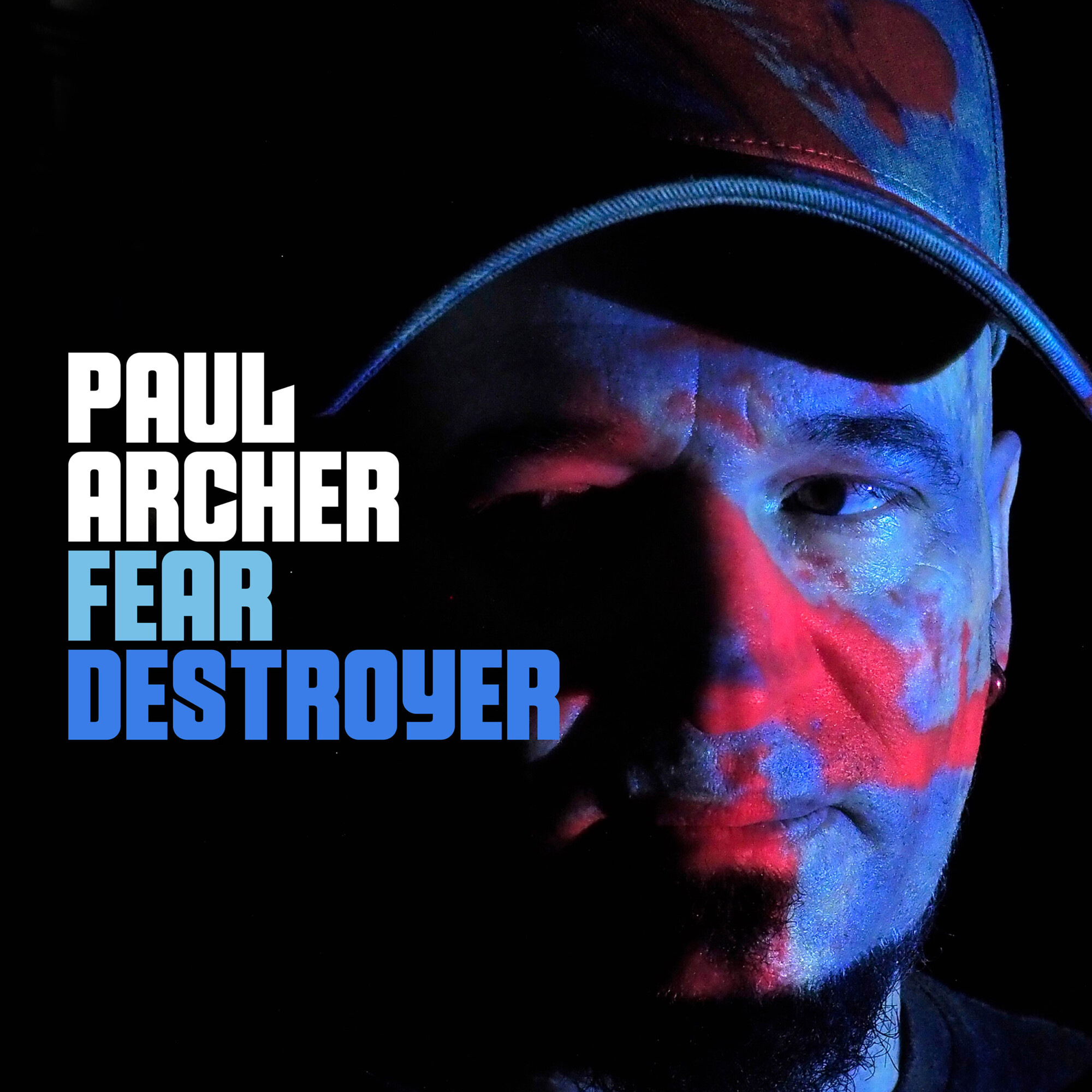
Really Interesting
Excellent interview!